
- Private Sailing Courses
- Fast Track to Cruising
- Learn to Sail Certification Courses
- Fast Track to Sailing
- Family Learn to Sail Programs
- Sailing Lessons and Sailing Rides
- Small Sailboat Cruising Course
- Online Learn to Sail Course
- Docking Refresher Course on a Catamaran or Monohull
- Fast Track to Monohull Cruising
- Live Aboard Cruising Courses
- Bareboat Charter Courses
- Catamaran Cruising Courses
- IPC Prep With Cruising Certification & Catamaran Endorsement
- Catamaran Endorsement & Refresher
- Boat Handling & Docking
- Women-Only Sailing Programs
- Navigation Courses
- Performance Sailing Courses
- Fast Track to Sailboat Racing Courses
- Performance Racing Clinics
- Coastal Passage Making Courses
- Offshore Passage Making Courses
- Celestial Navigation Courses
- Powerboat Courses
- Sailing Certifications
- Top 10 Tips for Learning How to Sail
- Safety and Comfort Aboard
- Sails & Sail Trim
- Steering and Maneuvering
- Handling Spinnakers
- Engine Maintenance
- Become an Instructor
- How to Choose a Sailing School
- Yacht Lease Management

DOCKING UNDER POWER
In this sailboat docking video, Offshore Sailing School Founder, Steve Colgate, shows you the best way to dock under power. This simple system gives you excellent control whether you are sailing with others or single-handed. Here are some helpful hints on how to dock a sailboat:
- Set up your aft amidships spring line first
- Power into the dock very slowly
- Drop the spring line over a piling or cleat
- Power against the spring line to stay tight to the dock while you put all the other lines ashore
HOW TO SPRING OFF OF A DOCK
In this video, you learn how to use spring lines on a sailboat to get out of a tight spot when the wind is pushing your boat onto the dock. Here are some helpful hints:
- Double up on the bow line and double back on the forward spring line by running each of these lines from a bow cleat and stern cleat, around a piling on the dock, and back to the cleat again
- Put the engine in reverse and bow will pivot out
- Make sure you have someone with a roving fender at the stern to protect against hitting the dock
- As you drive forward, clear the aft-leading spring line, then the stern line, and next the bow line by releasing the top part of the line on the cleats as you drive straight forward
- Be prepared to release both ends, in case one end gets caught on the dock
GET IN TOUCH
Call us today.
888-454-7015 or 239-454-1700
Ask our experts about training, group packages, vacations, and more!

6338 Presidential Court, #201 Fort Myers, Florida 33919
SPECIALS COURSES
LOCATIONS CONTACT US
ABOUT US SAILING TIPS
[email protected] Site Map Privacy Policy
© 2024 Offshore Sailing School - Official Site. OffshoreSailing.com is managed by Offshore Sailing School.
- Privacy Policy
- Fast Track to Sailing | Beginner to Advanced in Six Days
- Fast Track to Catamaran Cruising
- Fast Track to Boat Handling & Docking
- Ultimate Cruising Course
- Coastal Navigation
- Private Courses
- Catamaran Refresher & 114 Endorsement
- Team Building Programs
- Women’s Sail Sip Spa Week in the British Virgin Islands
- Top 10 Tips Learning How to Sail
- How to Become a Sailing Instructor
- Yacht Lease Management Opportunities
- Bookstore New!
- About Sailing
- Cape Coral Marina Village
- Fort Myers Beach
- St. Petersburg
- Captiva Island
- Scrub Island
- St. Lucia & Windward Islands
- Greece Ionian Islands
- Sicily In The Aeolian Islands
- Dubrovnik-Montenegro Flotilla Cruise
- Italy’s Amalfi Coast Flotilla
- Tahiti’s Society Islands
- Team Building
- Testimonials
- SAILING TIPS
- SPECIAL EVENTS
- Offshore Sailing School Returns to Captiva Island, Florida
- Sailing – Out & About SWFL
- America’s Cup Endeavor Program Videos
- Growing Up Moorings
- Doris Colgate Sailing Clinic & Cup
- Steve Colgate Inducted Into National Sailing Hall of Fame
- OSS Student Proposes During Course
- Steve Colgate and National Sailing Hall of Fame
- St. Lucia and Windward Islands Flotilla Cruise
- Weathering Unexpected Bad Weather
- A Sailing Adventure He Still Can’t Believe Was Real
- 2016 Croatia Flotilla Cruise Diary
- Colgate 26 LP
- How We Teach
- Steve & Doris Colgate
- Steve Colgate
- Doris Colgate
- Management Team
- Employment Opportunities
- Our Mission
- Our History
- Alumni Benefits
- Awards & Accolades
- Our Philanthropy
- Certification Levels
- GET STARTED
How to dock and undock your sailboat
Docking and undocking a sailboat may seem daunting, but with practice and proper technique, it can be easily mastered. Gain confidence and avoid common mistakes with our comprehensive guide.
How to Dock and Undock Your Sailboat
Docking and undocking your sailboat can be a daunting task, especially for those new to the sailing lifestyle. However, with practice and the right techniques, you’ll soon be able to confidently maneuver your boat in and out of the dock like a pro. In this comprehensive guide, we’ll cover everything you need to know about docking and undocking your sailboat, from the basics to advanced techniques.
Table of Contents
Understanding docking and undocking, preparing for docking, docking techniques, undocking techniques, docking and undocking in different conditions, common mistakes and how to avoid them, practice makes perfect.
Docking refers to the process of bringing your sailboat alongside a dock, pier, or slip, and securing it in place. Undocking, on the other hand, is the process of releasing your boat from its moorings and maneuvering it away from the dock. Both docking and undocking require a combination of boat handling skills, knowledge of wind and current conditions, and effective communication with your crew.
Before you approach the dock, it’s essential to prepare your boat and crew for the docking process. Here are some steps to follow:
1. Assess the Docking Area
Take note of the wind and current conditions, as well as any obstacles or other boats in the area. This will help you determine the best approach for docking your sailboat.
2. Prepare Dock Lines and Fenders
Ensure that your dock lines (also known as mooring lines) are ready for use. You’ll need at least two lines: one for the bow (front) and one for the stern (back) of your boat. It’s also a good idea to have a spring line, which runs diagonally from the bow or stern to the dock, to help control your boat’s movement.
Fenders are essential for protecting your boat from damage while docking. Attach them to the side of your boat that will be facing the dock, and adjust their height so they’ll be positioned between your boat and the dock.
3. Assign Roles to Your Crew
Make sure everyone on board knows their role during the docking process. This may include handling dock lines, adjusting fenders, or providing guidance as you maneuver your boat.
4. Approach the Dock Slowly and at a Controlled Speed
As you approach the dock, maintain a slow and controlled speed. This will give you more time to react to any changes in wind or current conditions and make adjustments as needed.
There are several techniques for docking your sailboat, depending on the type of dock and the conditions you’re facing. Here are some common methods:
1. Parallel Docking
This is the most common method of docking, where you bring your boat alongside the dock in a parallel position. To execute this technique:
- Approach the dock at a shallow angle, with your bow pointed slightly towards the dock.
- As you get closer, turn your boat so that it’s parallel to the dock, and use your engine or sails to maintain a slow forward motion.
- When your boat is alongside the dock, use your dock lines to secure the bow and stern to the dock cleats or pilings.
- Adjust your fenders as needed to protect your boat from the dock.
2. Mediterranean Mooring
This method involves backing your boat into a slip or berth, with the stern facing the dock. Mediterranean mooring is common in marinas with limited space or where boats are moored close together. To perform this technique:
- Approach the slip or berth at a shallow angle, with your stern facing the dock.
- Use your engine or sails to slowly reverse your boat into the slip, while keeping an eye on any obstacles or neighboring boats.
- As your boat enters the slip, have your crew secure the stern lines to the dock cleats or pilings.
- Once the stern is secured, use your bow lines to pull your boat forward and secure it in place.
3. Single-Handed Docking
If you’re sailing solo or with a limited crew, you may need to dock your boat single-handedly. This can be challenging, but with practice and the right technique, it’s possible to dock your sailboat safely on your own. Here are some tips for single-handed docking:
- Use an autopilot or self-steering system to help maintain your boat’s course and speed while you prepare your dock lines and fenders.
- Approach the dock slowly and at a shallow angle, giving yourself plenty of time to react and make adjustments.
- Secure your boat’s bow line first, as this will give you more control over your boat’s movement.
- Once the bow is secured, use your engine or sails to bring the stern alongside the dock, and secure the stern line.
Undocking your sailboat requires just as much skill and preparation as docking. Here are some steps to follow when undocking:
1. Prepare Your Boat and Crew
Before you release your boat from its moorings, ensure that your crew is ready and aware of their roles during the undocking process. This may include handling dock lines, keeping an eye on other boats or obstacles, or providing guidance as you maneuver your boat away from the dock.
2. Release Your Dock Lines
Start by releasing your stern line, followed by your bow line. If you have a spring line, release it last. Be sure to keep a hold of your dock lines as you release them, so they don’t fall into the water or get caught on your boat’s propeller.
3. Use Your Engine or Sails to Maneuver Away from the Dock
Once your dock lines are released, use your engine or sails to slowly and carefully maneuver your boat away from the dock. Be mindful of wind and current conditions, as well as any other boats or obstacles in the area.
Wind and current conditions can significantly impact your ability to dock and undock your sailboat. Here are some tips for handling different conditions:
1. Docking and Undocking in Light Winds
In light wind conditions, you may need to use your engine or sails to provide additional forward or reverse motion to help maneuver your boat. Be prepared to make adjustments as needed to maintain control of your boat.
2. Docking and Undocking in Strong Winds
Strong winds can make docking and undocking more challenging, as they can push your boat off course or cause it to drift. To counteract the wind:
- Approach the dock at a steeper angle, so the wind pushes your boat towards the dock rather than away from it.
- Use your engine or sails to maintain a controlled speed and counteract the wind’s force.
- Be prepared to make quick adjustments to your boat’s position and speed as needed.
3. Docking and Undocking in Currents
Currents can also affect your boat’s movement during docking and undocking. To handle strong currents:
- Approach the dock at an angle that allows the current to help push your boat towards the dock.
- Use your engine or sails to maintain a controlled speed and counteract the current’s force.
Here are some common mistakes sailors make when docking and undocking, and how to avoid them:
- Approaching the dock too fast: This can lead to a loss of control and potential damage to your boat or the dock. Always approach the dock at a slow and controlled speed.
- Not preparing your boat and crew: Ensure that your dock lines, fenders, and crew are ready before you approach the dock. This will help prevent last-minute scrambling and potential accidents.
- Not accounting for wind and current conditions: Be aware of the wind and current conditions, and adjust your approach and boat handling techniques accordingly.
- Not communicating with your crew: Clear communication is essential during docking and undocking. Make sure your crew knows their roles and responsibilities, and keep them informed of any changes or adjustments you need to make.
Docking and undocking your sailboat can be challenging, but with practice and the right techniques, you’ll soon be able to confidently maneuver your boat in and out of the dock. Remember to always approach the dock slowly and at a controlled speed, prepare your boat and crew, and be mindful of wind and current conditions. Happy sailing!

- Center Consoles
- Dual Consoles
- Motoryachts
- Sport Cruisers
- Tenders & Ribs
- U.S. Atlantic
- Engine Buyers Guide
- Electronics
- Digital Edition
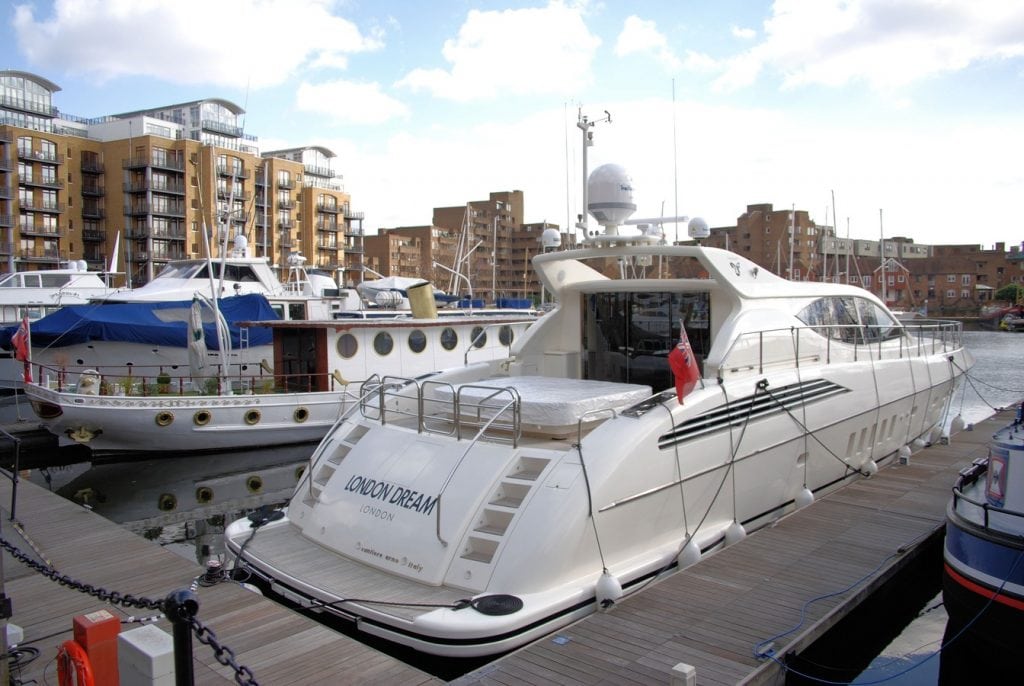
WATCH: docking tips with Capt Chris
Fall Events in The Bahamas
Downrigging downtown.

Wow. That was useless.
Hi Gp, can you give me a suggestion on a video you would like to see on our site?
Leave a Reply Cancel reply
Your email address will not be published. Required fields are marked *
Save my name, email, and website in this browser for the next time I comment.
Receive our Newsletter
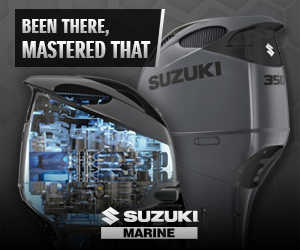
Recommended

St. Patrick’s Day Events
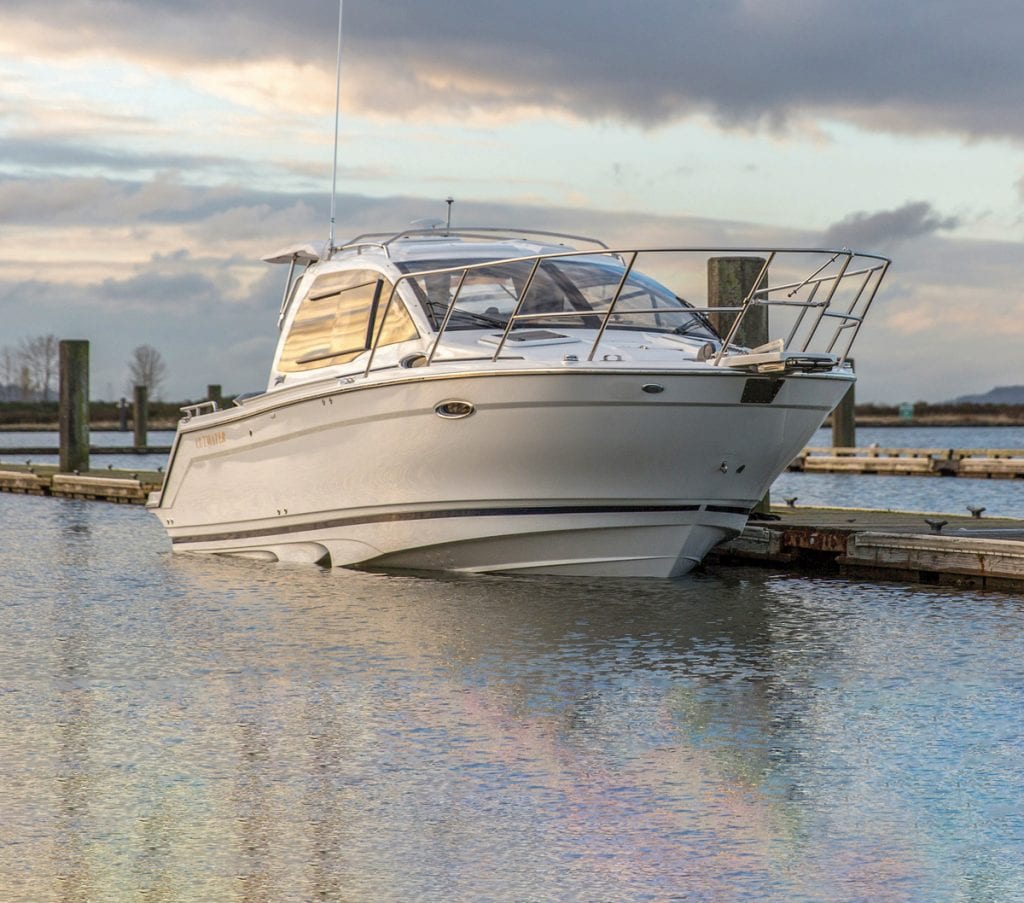
Cutwater C-242 SE

Don't miss it

Marine Generator Maintenance: Helpful Tips You Need To Prevent Issues

Slow Down Ahead. How Much Will They Cut?

View From the Pilothouse – September 2024

Explore 4 of the Best US Boating Destinations: Michigan, Maine, and More!

End-of-Season Boat Maintenance: Winter Prep is Crucial to Ensure Peace of Mind

The Pursuit OS 405 Review: Reliable Comfort and Performance for Fishing and Cruising
- Terms Of Service
- Privacy Policy

1591 E. Atlantic Blvd, 2nd Floor Pompano Beach, FL 33060 Office: +1 (954) 522-5515 Fax: +1 (954) 522-2260 Contact us: [email protected]
© 2024 Southern Boating Media
- Skip to primary navigation
- Skip to main content
- Skip to primary sidebar
- Skip to footer
Sailing Eurybia
Two Humans and a Dog sail Mexico on a Sea Maid Ketch
Tips for Docking a Sailboat Safely and Confidently
April 18, 2019 10 Comments
I grew up in a sailing family. I learned by example from my dad, then by experimentation after that. Since our early boats had no engines (nor did they go in reverse!) I did not learn about docking except how to sail a tiny light boat up to a dock and turn into the wind. Not much use for our 32,000 pound 45’ boat! Ever since I had been docking by winging it – and sometimes winging the bow pulpit. I successfully docked in most situations, but it was always nerve-wracking.
Finally I have had an opportunity to change that. I took my first ever ASA class here in San Francisco and learned techniques I would not have thought of, plus got confidence by doing it myself. The Advanced Motoring & Docking class as taught by Tradewinds Sailing School in Richmond, CA is fabulous. At first I thought it seemed expensive at $325. However it’s a full day on the water and the in-person instruction was fabulous. There were just two of us in the class and we used a Jeanneau 43 for the day. I learned so much about controlling the boat in tight quarters WITHOUT jumping off the boat or doing other dangerous and unnecessary actions. Although they test on the ASA information, they also introduce their own methods which, I have to agree, seem far better than the traditional approaches.
I will share with you some of the information I learned, but of course my notes are only to pique your interest and maybe give you some hints for your own docking. I strongly recommend that if this interests you that you find a course yourself, but you might ask if their methods require jumping off the boat to catch lines when docking. Tradewinds methods have convinced me that this is a dangerous and unnecessary practice, despite being the most commonly seen. Tradewinds trains you to stay on the boat, keep the boat under control, and step off the boat to tie dock lines only when the excitement has ended, the boat is stopped, and it is safe to do so slowly.
Motoring Concepts
Moving a boat under power has six elements that you have to balance or learn to work around. Wind and Current clearly can affect how the boat behaves. Prop Walk and Prop Wash are two ways that the boat’s motion is affected by the propeller action. And finally Momentum (how much way you have on) and Inertia (the tendency to keep moving in the direction you are already going, even when the engine is in neutral) are two more forces that can be used as tools to controlling the boat by power. These influences are probably familiar to you but we’ll run through them quickly.
Wind and Current
Current tends to affect the whole boat, making it move downstream in generally a straight line. It can also be hard to see until you suddenly realize you are going to miss the slip you were aiming for.

Wind tends to affect the bow most quickly, making it trickier to move the bow into the wind without it blowing off. But this means that reversing into a wind is often easier than powering forward into a head wind. Useful to realize that.

Momentum and Inertia
Momentum is the amount of force your boat has based on its speed and weight. Momentum is why you want to have control over speed – as they say you should approach the dock at the speed at which you are willing to hit it. Inertia is the tendency to stay moving a particular direction. Inertia will be essential in fighting prop walk – read on!
Prop Walk and Prop Wash
Prop Walk is the tendency for the boat to turn in a particular direction when reversing. Most boats have a right-hand turning propeller which forces the stern to the left when in reverse. Left-hand propellers would do the opposite. In the following paragraphs I will default to a right-hand turning propeller but I will try to remember to put notes in parentheses e.g. (LH: steer left) for those with left-hand drive props.
How do you know whether you have a right-hand or left-hand drive? If you have tried to reverse you may have noticed that it curled off to one direction or another. But if you have a new boat then you can check this at the dock when tied off securely. Put the engine in forward with moderate throttle. On one side of the boat or another, just aft of amidships, you will see agitated water. The other side of the boat will be calmer. This agitated water is the result of Prop Wash as the propeller blasts water off the keel. For a boat propeller that turns to the right, clockwise, (when viewed from astern) the prop wash will appear on the starboard side (and your boat will reverse to the left). If you see the turbulence on your port side you have a left-hand drive, your boat will reverse to starboard, and will need to follow the (LH: xxx) instructions.
Whichever direction of Prop Walk your boat has, transitions to neutral will allow the boat to keep moving backwards without continuing to turn. Short bursts in reverse will apply more power to keep moving backwards, but once you get way on again, pop into neutral to counteract the turning.
Going into neutral allows the boat to stop exhibiting prop walk while still moving in the direction you were going the moment you slipped out of reverse.
Use Minimum Motions
Big motions get you in trouble on a boat. Tiny adjustments are often enough and easy to counteract if you went the wrong direction. A 6” turn of the wheel is plenty – do a little and watch. Likewise just changing gears is often enough, you may not need to throttle up to change the motion of your boat. Change gears first, then throttle up slowly if you still need the power. Occasionally you will need to give a burst of throttle, but it still does not need to be a large change, just quick.
Note: If you have a throttle and a gear shift (my boat has a single handle for both functions) then don’t forget: Forward – Neutral – Reverse – never go straight from Forward to Reverse, always pause in Neutral to avoid transmission damage.
Remember A Boat Doesn’t Drive Like a Car
My very first cruising boat was a homemade beauty that had some, shall we say, peculiarities. One of these was that the steering system was from a car. The steering wheel was a smallish car steering wheel and it was hooked up backwards – you turned left to go right – sort of like a tiller. Boy did I get confused when trying to back up! I assume you don’t have this issue on your boat. However notice that this entire article assume you have wheel steering. For tillers a right rudder is effected by turning the tiller LEFT, whereas a steering wheel (usually) is turned right to effect a right rudder.
In some ways a boat DOES turn like a car: When you are going forward (assuming sufficient speed) and turn the wheel to the right your boat starts a right turn in a gentle arc. If you were to reverse (assuming sufficient speed) it would follow that same arc in reverse (until you slow enough for prop walk to affect your boat’s motion).

Whether going astern (with sufficient speed) or ahead the boat tends to travel along an arc. The left image above shows the path when the rudder / wheel is turned left and the right image shows the path with right rudder / wheel.
However, unlike a car, a boat turns about a pivot point aft of the main. So when the bow moves to the right in a turn, the stern is swinging out to the left.

If you’re turning a boat your stern can hit a pillar which the bow cleared just fine – check your stern and turn when it is safe for the stern to swing out.
Also be aware of Advance which is much greater in a boat than in a car. Advance is the distance before the opening that you need to start your turn (when entering forwards). Our instructor told us that for the 43’ boat we were sailing that we needed to start the turn into the slip about 62’ out – about 3 of our marina’s 21’-wide slips before the slip we were going into. Remember that the helmsman determines when to start turning so the advance distance is properly the horizontal distance from the helm station to the center of the slip you are going to.

Other sources say to turn when the opening is 30 degrees off the direction of your boat. Try these methods until you are comfortable turning into your home slip and you can estimate a similar distance or angle when going into an unfamiliar marina.
Docking Techniques
Note that these docking techniques are different than most of us are taught in two ways:
- no one jumps off the boat until the boat is stopped next to the dock
- you do not throw lines to people on the dock, instead you stay in control until stopped then step off the boat
This may be heresy to you and other captains you sail with, but it is much safer for both your crew and your boat.
Some Techniques to Practice
If you think of docking as being done 75% in neutral you won’t be far off. Neutral has the great advantage of taming prop walk and utilizing momentum effectively. Of course you have to use forward and reverse to get anywhere, but think of forward and reverse as momentary “correctors” that just increase your momentum or change your direction.
In some of these maneuvers you will want to have a “loop” prepared to help control the boat when you arrive. An aft spring loop will be a mooring line secured at your aft cleat and your waist (midships) cleat with enough slack to nearly touch the water. It will be used when heading forwards along a dock.
A forward spring loop is similar – a mooring line secured at your bow cleat and your waist (midships) cleat with enough slack to nearly touch the water. It will be used when backing onto a dock. In both cases you want there to be enough slack that the crew can pick up the slack in two hands and toss it over a cleat on the dock when the boat is nearly stopped and in good control close to the dock. The boat will back down (forward spring loop) or move up (aft spring loop) and get sucked into the dock with no need to use (unreliable) bystanders or dangerous leaps to shore from a moving boat. See more detail in Parallel Approaches below.
Back-and-Fill or Standing Turn
A standing turn, changing direction or “spinning” in place, also called Back-and-Fill is a useful technique. You can practice this is an open area, or for best results, in an empty mooring field where you can really mark your starting position. For a RH Drive boat you will put your wheel all the way to the right (LH: Left wheel) and lean against it to hold it in place – you will not be turning the wheel again until you’re done . Go forward and proceed slowly on your turn. When you are starting to move away from your starting position, go into reverse, where you will be helped by prop walk as well as the rudder angle. Once you start to go backwards rather than just turning, shift back into forward and continue alternating forwards and reverse until your boat is facing the new direction. Straighten your wheel to proceed.

The Standing Turn or Back-and-Fill. The dark line out the back represents the rudder/wheel position and the pink arrow indicates direction of travel. By alternately reversing and going forward you can turn your boat in place.
Where do you use this?
- preparatory to backing into your slip
- turning in a fairway when you are headed the wrong direction (oh – the fuel dock is over THERE!)
- any time you need to turn the boat around and have limited space to do it
- showing off for your friends
Perpendicular Forward Approach
Say you are approaching the fuel dock. It is directly in front of you. You are going to need to turn to come parallel to it. How close do you get before turning? A rule of thumb is approach until the bow of your boat appears to be at the same level as the dock you are approaching. This is a rough guide, but much easier than trying to guesstimate when you are, say 62’ away. Then once you are parallel to the dock proceed as for Parallel Forward Approach below.
Parallel Forward Approach
This is probably the most common way to approach a pump-out or fuel dock when there is plenty of room to do so. When you can approach from either side equally then plan to approach port side to the dock (LH: starboard side to the dock) so you can use prop walk in getting off if needed. Prepare an aft spring loop on the port side (LH: starboard side) as described above. Approach slowly in forward gear from a ways out, turn 30 degrees to the dock until you judge you are getting close, then straighten the wheel. You should be in neutral by now. Make adjustments (reverse if you’re going too fast, forward if you’ve lost way) and slow down until you are stopped or nearly stopped a few feet away from the dock. Ask the crew to toss the aft spring loop onto a cleat. Then pop into forward with very low throttle and turn the wheel away from the dock. The boat will be sucked into the dock and held there so that crew can safely and slowly disembark. If you need to do a lengthy fuel up or need to take your boat out of gear for another reason then the crew can secure the boat normally with mooring lines. Otherwise you can just stay in gear while you pump out.

Aft Spring Loop – Forward Gear – Turn away from dock
Parallel Backwards Approach
This approach is very similar to above but you will be backing in and using a forward spring loop. The preference is also to land on the port side (LH: starboard side) In this method but you can approach with either side to the dock in good conditions (little wind or current). Once the spring is deployed, pop into a gentle reverse, and you will be sucked into the dock and against the spring line.

Forward Spring Loop – Reverse Gear – Rudder not significant
You can also use this method if you are going in forward but the only cleat is ahead. Then you can use the forward spring but change into reverse and go backwards to secure yourself against the dock.
Wind Conditions
Wind on your bow is destabilizing – the bow can blow down and it is difficult to control the boat. However moving your stern into the wind is actually easier – the bow tends NOT to blow off when the stern is into the wind. You do have to contend with prop walk, but you have been given ways to deal with that.
So if you are approaching your slip on a very windy day these are the easiest ways to approach:
- back in if the wind is coming out of your slip
- go in forwards if the wind is blowing into the slip
Especially if others are watching! Why make it harder?
Backing in with wind ahead
But if you do need to back up with the wind from forward and your bow is tending to blow off, it gets confusing knowing which direction to turn. Rather than try to wrestle through the logic, just turn in the direction you DON’T want the bow to go.
If backing up and the bow starts to fall off to starboard, turn starboard. If it starts to fall off to port, turn to port. Little turns, a few inches.
Why does this work? Remember that when in reverse the stern turns to the right when the wheel is right, which means the bow turns to left.
Backing Out of the Slip – Basic
The most basic idea about leaving the slip is to plan for where you want to end up. You always want to end up on the windward side of the center line down the fairway heading towards the exit. For those with a fairway exit opposite the direction their prop walk takes them, well, you may need to back down the fairway and you should become comfortable with this. You can also use spring lines or warps to get your boat turned opposite the prop walk direction, but that is beyond the scope of this article.

Wind Coming out of the slip
The wind will assist getting out of the slip but you need to take a fairly tight turn so that you stay on the windward side of the slip and don’t blow down on the boats across the fairway. You may need a spring line on the outer leeward side of the slip to help you turn.
Wind Blowing into the slip
When the wind is blowing into the slip it’s essential to reverse a little more forcefully to get out of the slip, but you can take a wider turn so as to end up on the other side of the fairway. You will need to make sure you can get your bow around so that you don’t get blown back down onto the pilings around your slip. So as soon as you are out of the slip and are crossing the center line of the fairway forcefully turn the wheel towards the wind, shift into forward and give it plenty of throttle to get that bow moving.

I hope these notes give you a few more ways to think about docking. I haven’t talked much about using lines to further control your entry to or departure from a slip – that’s the Advanced Advanced Class! Likewise maneuvering around other boats on the docks you are approaching. But in good conditions and without other boats around these methods will work with no additional measures. So practice these docking techniques until you are confident entering and departing your slip in good conditions, and you can approach the fuel dock with confidence. Good Luck and Be Calm.
Share this:
- Click to share on Twitter (Opens in new window)
- Click to share on Facebook (Opens in new window)
- Click to share on WhatsApp (Opens in new window)
This site uses Akismet to reduce spam. Learn how your comment data is processed .
Brilliant! There is so much good information in this post – I’m so glad to see it. Would love to see your take on getting in and out of docks when maneuvering between other boats that are already tied up. Also your favorite engineless docking thoughts. But in the meantime, those spring loops really are special – wonderful to learn some new stuff about this! Cheers, Shemaya
Thank you! I’m so glad you found it useful. And yes, coming into, say, a fuel dock when there are already other people tied up would be a great follow-up topic. And engine-less docking, something we used to do frequently when we had a boat with a less reliable engine (!) is something way too few people learn to be good at. My current slip nearly always has stiff breezes straight from the Golden Gate Bridge blowing into it so I think I would have to line in for safety. Another good topic! And then anchoring under sail – everyone … Read more »
Hi Marie, All of that sounds great! I’d be fascinated to hear your take on anchoring and sailing off of anchors without motors. I’ve read various versions, and have what I do, which doesn’t necessarily match up with recommendations, but has worked for me… I haven’t actually written that up. When you say “lining in,” you mean setting an anchor so that you can let the boat fall back under control? I’d be really interested to hear details about that, especially about how you manage the anchor and line after the boat is in the slip. It’s not something I’ve … Read more »
Maybe “line in” isn’t the real term — I just meant that I’d have to use lines to control the boat without an engine if there were a stiff breeze straight into my slip. You’re right though – in severe conditions without an engine using an anchor to control your speed might work – but then you’d have to go get the anchor with the dinghy. Ok for an emergency but wouldn’t do that as a routine. But we’ve also used our (powered) dinghy on the stern quarter to move the boat when there were no winds and the engine … Read more »
Thanks for your suggestion to slightly and/or quickly adjust the steering wheel to get the desired direction instead of using big motions. My husband and I are looking into buying a sailboat this summer, but I don’t have a ton of experience with driving one. He’s been giving me a lesson or two on our friend’s boat, and I’m slowly improving, but this tip helps a lot. Once I get good at this, we’ll need to look into getting a boat and a dock so we can more fully enjoy the summer.
And heavier boats take some getting used to – you have to turn a little and wait for the boat to react. Good luck! It’s a great skill to have and makes your time on the water much more relaxed. Enjoy.
Great article. Thanks for summarizing the tricks and pointers. Very helpful
Thanks, Jim! So glad it was useful to you.
This may be the most helpful article I’ve read on sailing. You explained several things well but briefly which made it more clear. I especially appreciate the explanations of spring loops. We recently saw a boat tied up this way and we’re curious, but didn’t ask. I also very much appreciated the point that the boat should be stopped before jumping off. It’s typically just my husband & me and I am very anxious about jumping and not very good at jumping off to tie up. I feel so much better about it now and will definitely try the spring … Read more »
Thank you Greta! So great to hear that knowledge that helped me is helping someone else! I typically steer the boat just because of the jumping off thing, and my husband ended up in the drink more than once! But now we have a safer way, I’m glad you do, too.
Stay in touch - sign up for our newsletter for occasional news from Eurybia and her crew.
Your Boat Name:
Email address:
- Privacy Policy
“Live in the sunshine, Swim the sea, Drink the wild air” --Emerson
About This Site
SailingEurybia is a WordPress site. The theme is a version of the Genesis Sample Theme developed by Eurybia-Marie . ©2018

Master the Art of Docking
Learn to dock your sailboat with ease and confidence
A video-based training program that demystifies the art of docking a sailboat
Wouldn't you love to dock under perfect control while your crew steps slowly and gracefully off the boat?
"...I loved the course..."
"I loved the course. Well explained, I like the demonstrations and the aerial shots, they helped a lot! Your explanations are also very clear and I love the animations."
~ JC France
"...well worth the cost..."
"Excellent course, videos and animations. Well explained concepts, better than I have seen anywhere else, and well worth the cost."
~ MB Ontario, Canada
(USD) $ 99.00
What You'll Learn
If you're not completely comfortable handling your vessel under power, and maneuvering in tight spaces, this course is for you.
With the help of video demonstrations, aerial footage, animations and comprehensive explanations, you'll learn:
- How different forces and factors affect the maneuvering of your boat - and how they can work for you or against you
- How to use these factors to your advantage
- How to plan and prepare for your arrival at the dock to maximize safety and control
- How to choose your approach strategically based on your specific situation
- How to plan and prepare for your departure - which can sometimes be as tricky as arriving
"...helped me to understand certain aspects I hadn’t fully understood..."
"Explained the principles very very well. Explained some of my docking habits and helped me to understand certain aspects I hadn’t fully understood, thank you. Love all the camera shots and angles helping explain the principles being taught."
~ DC BC, Canada
"...It really did remove the mystery..."
"The Master the Art of Docking course arrived at just the right time for me. After a number of years of trial and error learning, this series laid out the principles that let me debug what was going on in a variety of circumstances. It really did remove the mystery around how to get finer grained control over the situation.
Just this past weekend I chose to go backwards into a moorage situation, and it was exactly the right thing to do."
~ Christian Nally Galiano Island, BC
What to Expect from the Course
You’ll receive 12 video-based lessons, including:
Lesson 1: Understanding the Factors at Work - the 6 forces and factors that impact your efforts to dock successfully Lesson 2: Using the Factors for Success - the skills you should have in order to improve your ability to dock proficiently Lesson 3: Steering Effectively in Reverse - the secret weapon that doubles your options Lesson 4: Preparation for Arrival at the Dock - planning ahead and setting up Lesson 5: Arrival Bow In - how to dock bow in, with a port or starboard tie Lesson 6: Arrival Stern In - how to dock stern in, with a port or starboard tie Lesson 7: Preparation for Departure - planning ahead and setting up Lesson 8: Departure Bow Out - how to depart bow out, from a port or starboard tie Lesson 9: Departure Stern Out - how to depart stern out, from a port or starboard tie Lesson 10: Docking with Crew - who does what, when, for optimal efficiency Lesson 11: Securing the Vessel - tying up safely to avoid issues while you're away or when preparing to depart Lesson 12: Working with Wind - how to adjust your strategy when wind becomes a factor
Lessons include practice exercises that build your skills and confidence and video transcripts for further review.
And this course is evergreen – meaning you can access any part of it and any updates whenever you want for the lifetime of the course.
NEW in 2022! - A Facebook community to ask questions, share experiences and tackle additional docking challenges.
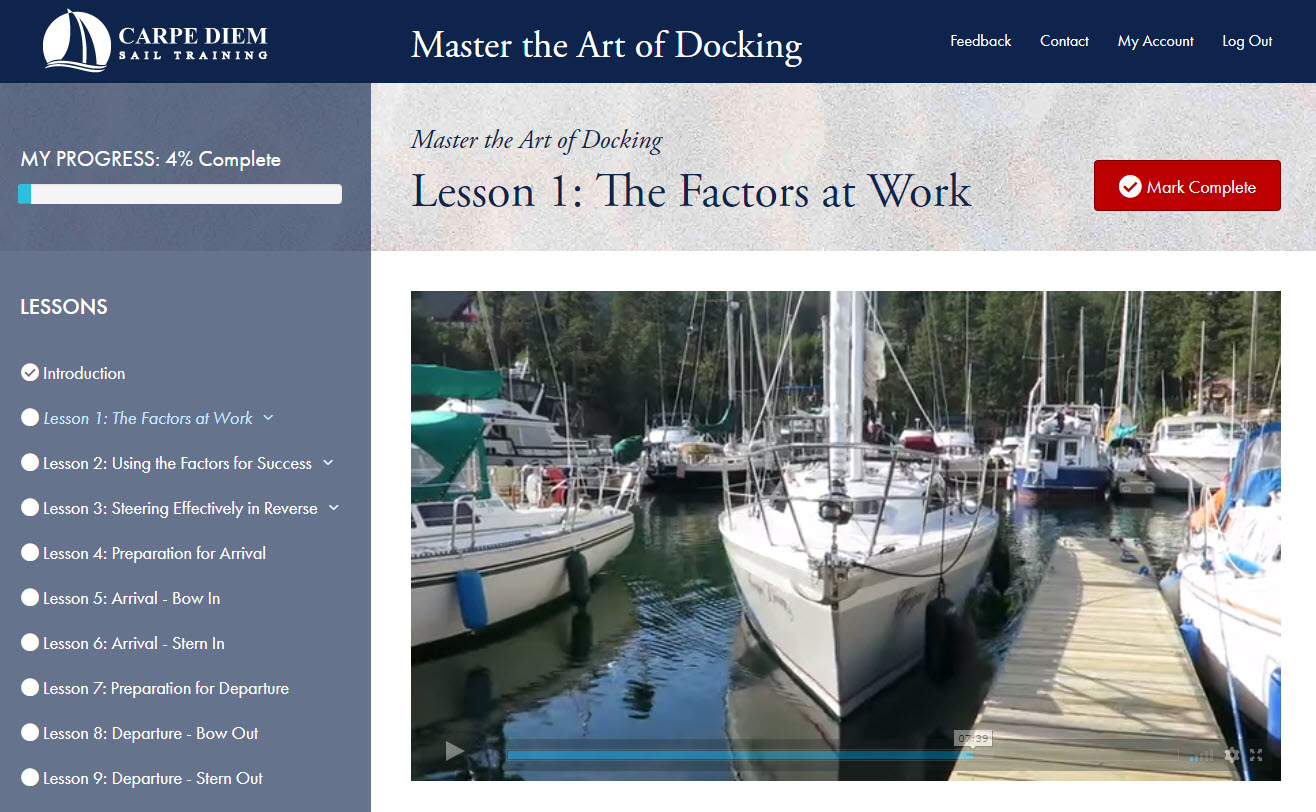
"...I'm feeling much more comfortable handling the boat in close quarters..."
"I have to say that the course has been very useful! We stream it onto the big TV and watch the videos together.
My husband and I went out and tried the practice exercises you had in the course particularly the ones on reversing into a slip. I'm feeling much more comfortable handling the boat in close quarters after working through the exercises on our boat."
~ ND Vancouver, BC
"...I was able to understand where I went wrong..."
"The practice exercises were good. I didn't always do well on my first try, but with mistakes you learn so I tried them again and was able to understand where I went wrong."
~ MB BC, Canada

Hi, I'm Marco Coda
Sail canada instructor for over 20 years.
I love the challenge of docking – but it wasn’t always that way. It took many years of experience and practice to gather the "aha" moments and piece them together into effective strategies.
Docking can be done the hard way or the easy way. I’ve learned what works and what doesn’t and I’d love to share my experience with you.
Equipment Needed to Complete the Course
Access to a computer and the internet to watch the videos and read the materials.
Access to a boat would be ideal to practice the techniques but, like a book (only much better) you can still learn the principles from the course alone.
Refund Policy
If you decide that the course is not for you, we’ll be happy to issue you a refund within the first 30 days after purchase, no questions asked.
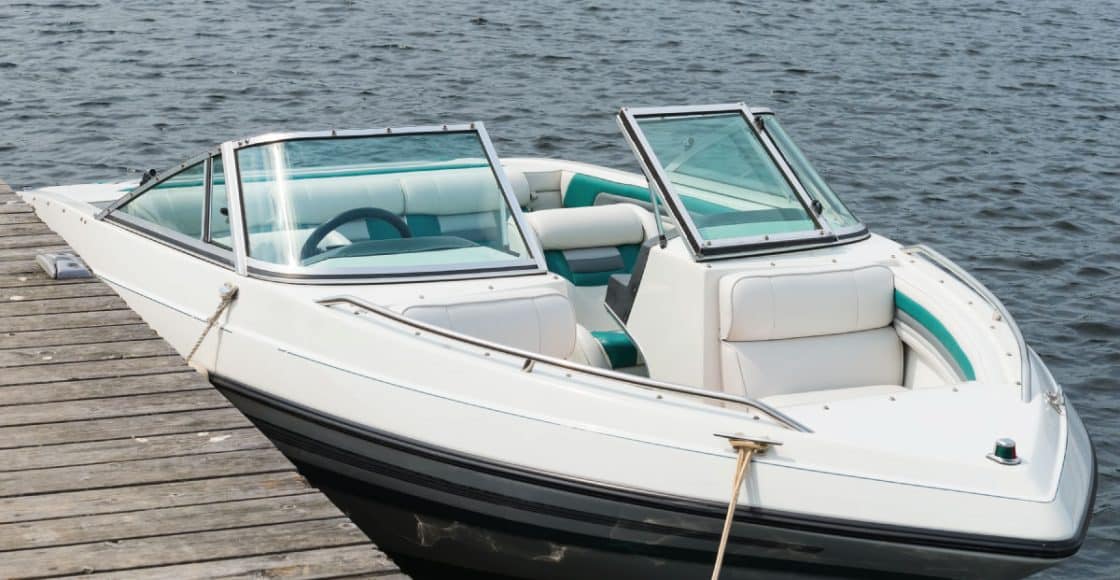
Docking a Boat: 5 Easy Steps for Beginners

Table of Contents
Last Updated on August 15, 2023 by Boatsetter Team
Learning how to dock a boat with style and confidence requires a little experience and familiarity with how your boat handles. Docking a boat by yourself or with a crew aboard becomes easier once you learn how to judge wind and currents. In this post, we’ll teach you how to dock a boat in five easy steps so that the next time you’re out on a Boatsetter rental , you can take the helm with more confidence.
- Make a plan
- Prepare the boat
- Docking with wind or current
- Approach the dock slowly
- Swing the wheel
Rent, Charter, Share— Only at Boatsetter
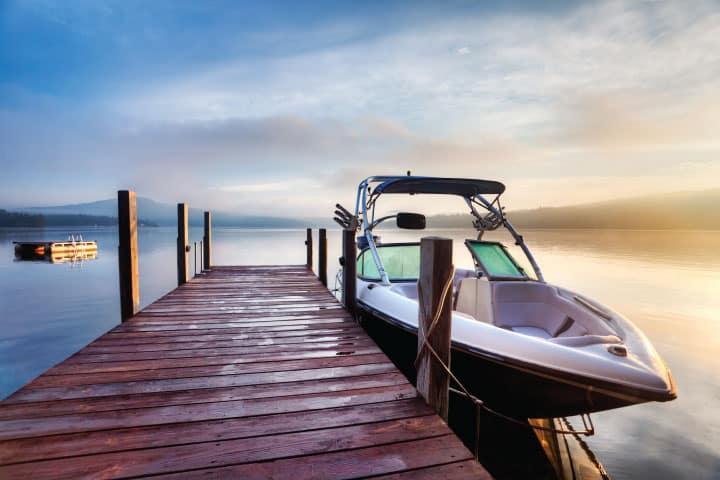
1. Make a plan
If you are unfamiliar with the dock, make a reconnaissance pass to determine how you’ll approach it. Things to consider as you prepare to dock the boat:
- The side of the boat you’ll be docking on.
- The location of cleats for tying up to the dock.
- The dock height so you can have your fenders adjusted to best protect the boat.
A fuel dock or the dock at a marina or restaurant may have an attendant who will tell you where they’d like you to tie up and will help you handle your dock lines.
2. Prepare the boat
Before you begin approaching a dock or slip, attach dock lines to a bow and stern cleat on the side of the boat that will be near the dock. Also, hang your fenders (bumpers) on that side of the boat. Now when you reach the dock, you’ll be ready to tie up.
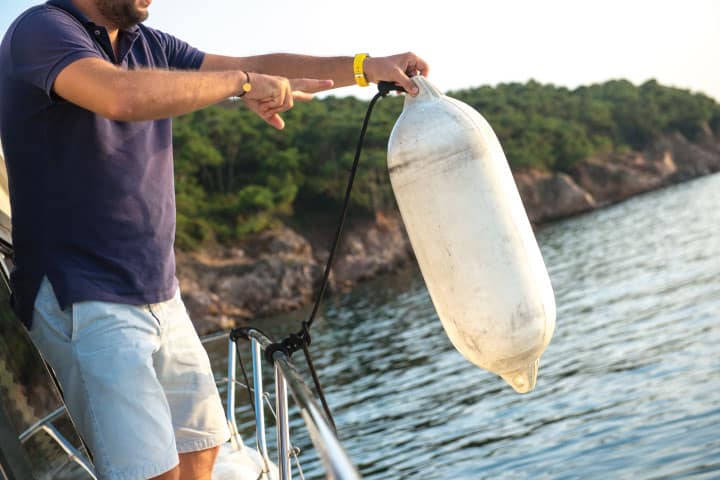
3. Docking with wind or current
Take a moment to check for wind and current that could affect how your boat will handle as you approach the dock. Flags on shore can give you a good idea of wind direction. If there’s an offshore wind, you’ll want to approach the dock at a sharper angle for best boat control, perhaps at 45 to 50 degrees. If the wind is blowing onshore, approach at a more shallow angle – 30 degrees or less – and plan to let the wind push you towards the dock.
Current can be observed by looking at dock pilings or markers– if there’s a significant current, you’ll be able to see the water flowing around the pilings or markers. Anticipate how current will move the boat as you approach the dock, and aim up-current so that you end up on target.
If you have the option, you’ll have better boat control approaching the dock into the current or wind.
READ MORE: Dock and Dine Basics: 7 Tips for Success
4. Approach the dock slowly
With wind and current in mind, begin your approach to the dock with just enough speed so that you maintain control. Take it slow; bumping the engine in and out of gear is okay. You’ll have more time to react and make decisions.

5. Swing the wheel
When the bow is about one boat length away from the dock, turn the steering wheel hard away from the dock. This will cause the stern to pivot towards the dock, closing up your angle of approach.
A smaller boat will react more quickly to this steering input than a bigger boat – after docking a few times, you’ll learn how your boat behaves and be prepared to time your move perfectly.
As the boat becomes parallel to the dock, turn the wheel hard in the other direction and shift into reverse. This will arrest the boat’s speed and pivot. If you have that on-shore wind, let the breeze drift the boat right up to the dock.
When the wind is off-shore, be ready to get a line on a dock cleat (or toss a line to the attendant) before the boat drifts off the dock.
If you find yourself out of control or position, aborting the approach is always okay. Idle away from the dock and try again. On your second approach, you may have a better idea of how wind or current is moving the boat or your ideal angle of approach and speed. Practice makes perfect! You’ll get the hang of it.
Learn how to boat with Boatsetter Academy
One sure way to get the hang of docking, among other skills, is by joining Boatsetter Academy at any one of its 16 locations. Through this 2-hour, hands-on boating course, beginners like you will build confidence and become familiar with the basics of boating. And the best part: courses are completely free!
Boatsetter is a unique boat-sharing platform that gives everyone— whether you own a boat or you’re just renting — the chance to experience life on the water. You can list a boat , book a boat , or make money as a captain .
List. Rent. Earn— Only at Boatsetter

Charles Plueddeman is a self-employed writer and photographer based in Wisconsin. A staff editor and contributor to Boating Magazine since 1986, he is the author of its “Off My Dock” column. In the marine realm he specializes in engine technology and trailerable boats. His editorial work has appeared in many national publications, including Popular Mechanics, Men’s Journal, Playboy, Popular Science, Cycle World, and Harley-Davidson Enthuisast .
Browse by experience

Explore articles

How to Fish with Lures

6 Marinas in Fort Lauderdale
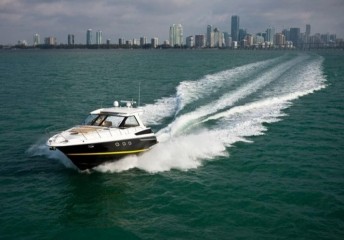
Marathon swimmer trains with the help of Boatsetter boat rental
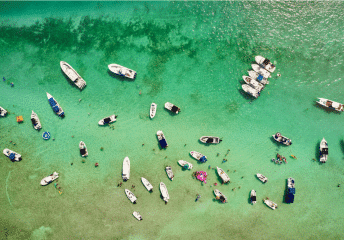
4 Best Spring Break Destinations for Boating
Docking a Boat: Step-by-Step Guide
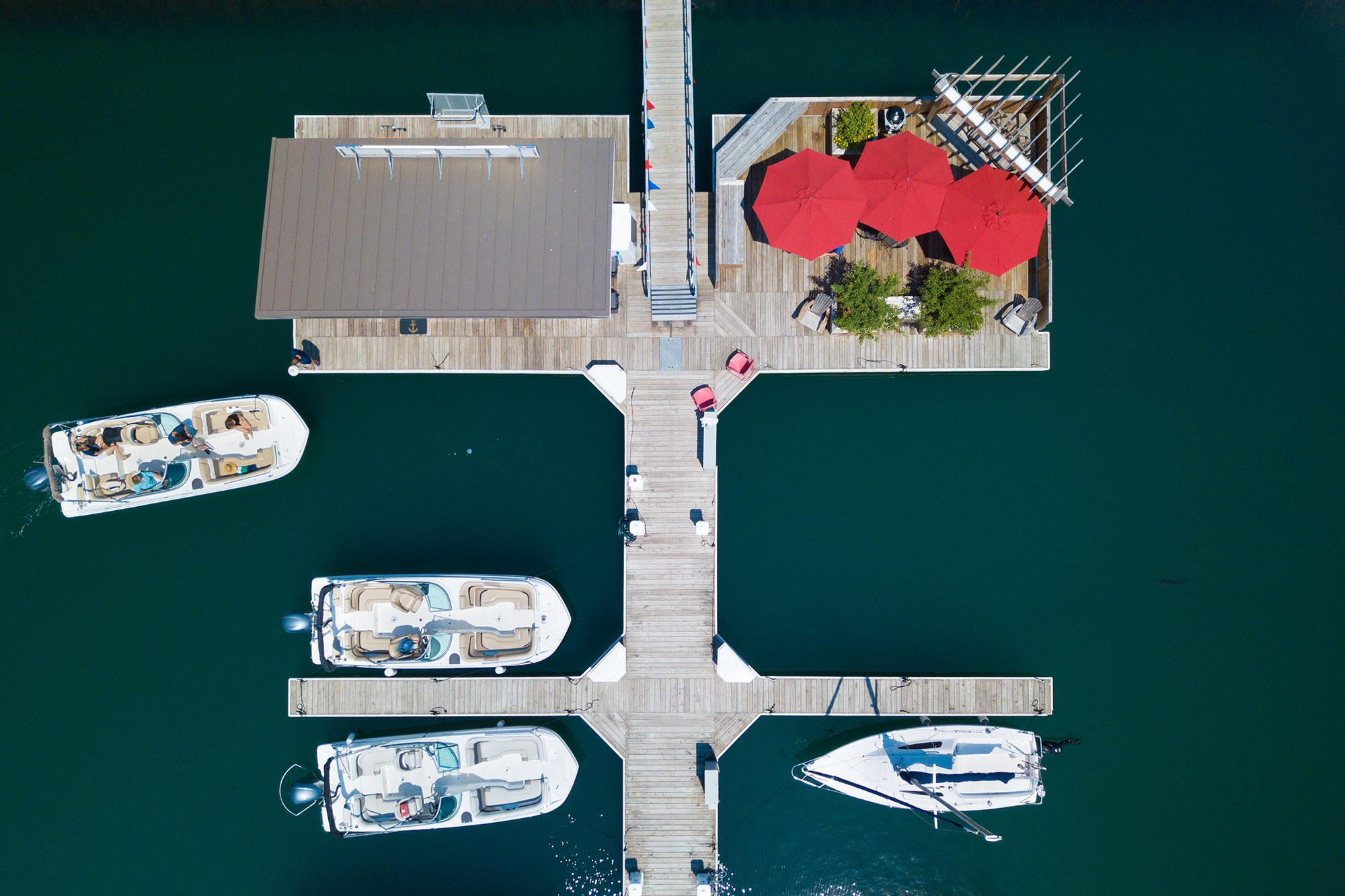
Docking a boat can often be intimidating and stressful, especially for those just getting started with boating. Luckily, learning how to dock a boat doesn’t have to be difficult, and boaters new and old can quickly master the task by following a few simple steps.
How to Dock a Boat
- Prepare dock lines on your bow and stern and attach fenders.
- Line up your approach and survey the docking area.
- Judge the current, wind, and water conditions.
- Take your time, proceed slowly towards the dock using intermittent acceleration.
- Never approach a dock any faster than you’re willing to hit it.
- Navigate into the boat slip or turn to come alongside the dock.
- Tie off your boat onto cleats, posts, or pilings using your docking lines.
It’s as easy as that! It can also be useful to have a friend or family member onboard or on the dock to help assist you throughout the process. If you’re docking by yourself, remember to take it slow and don’t be afraid to stop, pull back, and circle around to try again. Place your fenders ahead of time and have your docking lines ready to tie off as soon as you’re in close proximity to the dock.
Now, let’s get into some specifics about docking a boat in different situations.
Docking in a Slip
As a boater, docking in a slip is a common scenario you’ll often find yourself in regardless of whether you are docking in your own personal slip, a friend’s slip, or at a public marina or dockside restaurant. Before you begin, we highly recommend having your docking lines and fenders ready ahead of time on both sides of your boat. As in any and all docking situations, you’ll then want to start by checking your surroundings —look out for other nearby boats and be conscious of the conditions of the wind, water and current.
Next, always maneuver at a slow speed . Within a slip, you have limited mobility, which means you have little room to make mistakes. In most cases, you’ll want to position your boat so you’re able to back into the slip . Before you start backing in, you’ll want to center your wheel .
Slowly reverse your boat into the slip . Do your best to keep your balance and tell your passengers to stay seated during the process. This is not only for their safety, but it can help to keep the boat steady as it moves into the slip. Apply one last small burst of power forward to stop your reverse momentum . Then, tie off your lines to the dock. We suggest having two bow lines and two stern lines tied onto both sides of the slip—with the stern lines crossed.
Docking a Pontoon Boat
When it comes to docking a pontoon boat , there are a few factors to keep in mind that differ from docking other types of powerboats . While you’ll still want to concentrate on maneuvering at a slow speed, you’ll want to pay even closer attention to the wind and current conditions . The wind has the ability to completely push your pontoon off track during a docking situation—or worse, push it into the dock itself. If you have a strong breeze present, you can counteract this with small, controlled bursts of acceleration. Likewise, don’t be afraid to use reverse to stop any unwanted forward movement of your boat.
Particularly when first learning how to dock a pontoon boat, you may want to enlist as much help as possible and have someone on land guide your boat alongside the dock or into the slip. You can also be proactive by preparing your docking lines and fenders ahead of time .
Lastly, you’ll want to get to know your boat . For example, how much acceleration do you need to make a complete turn at a slow speed? How sharp can you take a turn? Just like cars, every boat is unique and the more you practice, the better you’ll get at overall handling and docking.
How to Tie a Boat to a Dock
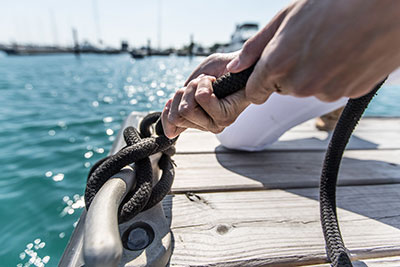
When it comes to docking equipment , you’ll want to keep a large supply of docking lines on hand. These docking lines, also known as mooring lines, can be used in a few different ways and can be referred to as bow, stern, spring and breast lines. In most cases, you’ll only be utilizing your bow lines and stern lines . The final piece of equipment you’ll want onboard are fenders, sometimes called “bumpers.”
When tying off your boat, you’ll usually be docking in a slip or alongside of a dock. In either of these cases, you’ll find cleats or pilings . Cleats are small, t-shaped equipment that are usually made of steel or some kind of metal that is attached to the dock. You also have similar cleats on your boat that you’ll use to attach your docking lines. Pilings, on the other hand, are large wooden posts that you would commonly find on a pier or positioned recurrently along the dock. Whenever possible, you’ll want to tie off your boat to the dock using cleats rather than pilings, for the simple reason that tying off on a piling can sometimes be more challenging.
When it finally comes time to tie your boat to the dock, there are a few common knots you can use to secure your lines: the cleat hitch , the clove hitch , and the bowline knot . Be sure to visit our Discover Boating YouTube channel to check out our videos on Boating Knots 101 .
Read Next: How to Tie Up a Boat
You Might Also Like:
- Anchoring a Boat: Step-by-Step Guide
- How to Navigate a Boat
- Boat Buyer's Guide
- Owning & Operating Resources
- Explore Different Boat Types

Join Our Newsletter!
Get community news, buying bargains, and how-to guides at your fingertips.
- 2024 BOAT BUYERS GUIDE
- Email Newsletters
- Boat of the Year
- 2024 Freshwater Boat and Gear Buyers Guide
- 2024 Boat Buyers Guide
- 2024 Water Sports Boat Buyers Guide
- 2024 Pontoon Boat Buyers Guide
- Cruising Boats
- Pontoon Boats
- Fishing Boats
- Personal Watercraft
- Water Sports
- Boat Walkthroughs
- What To Look For
- Watersports Favorites Spring 2022
- Boating Lab
- Boating Safety
- Ultimate Boating Giveaway

12 Top Docking Tips
- By Boating Staff
- Updated: June 23, 2017
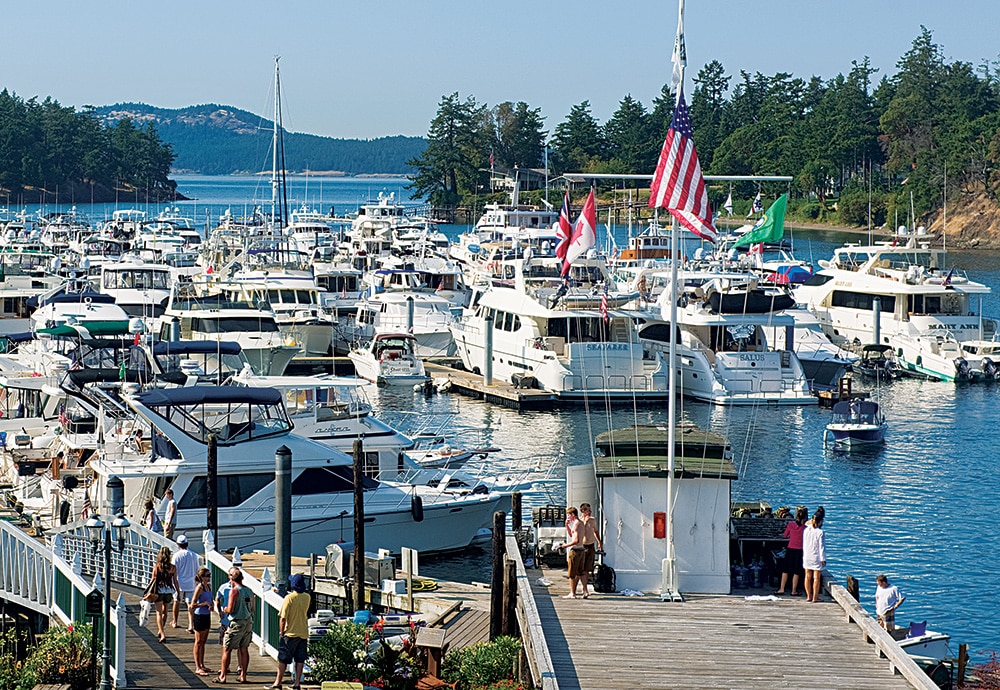
Here are 12 tips that will not only make you better at close-quarters maneuvering and docking, but will also make you a better all-around boater. Remember, the cardinal rule of docking is never approach the dock faster than you are willing to hit it.
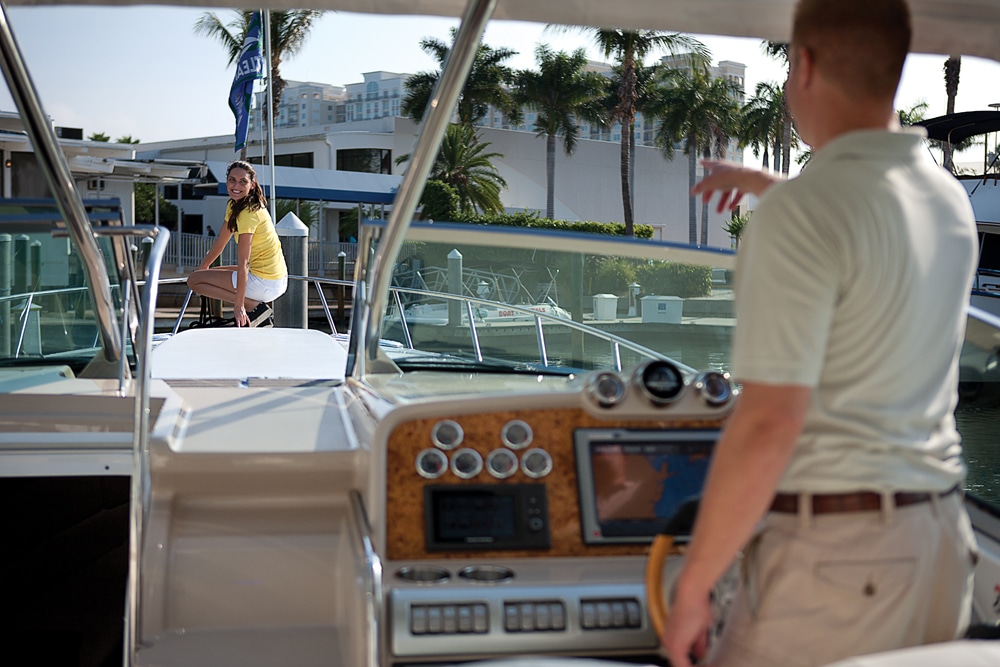
1. Come Up With a Plan First and foremost, you must be aware of how your boat handles, particularly at bare steerageway. The more comfortable you become, the more confident you’ll be when trying to slip it into a tight space in a jammed marina.
10 Simple Rules for Better Docking
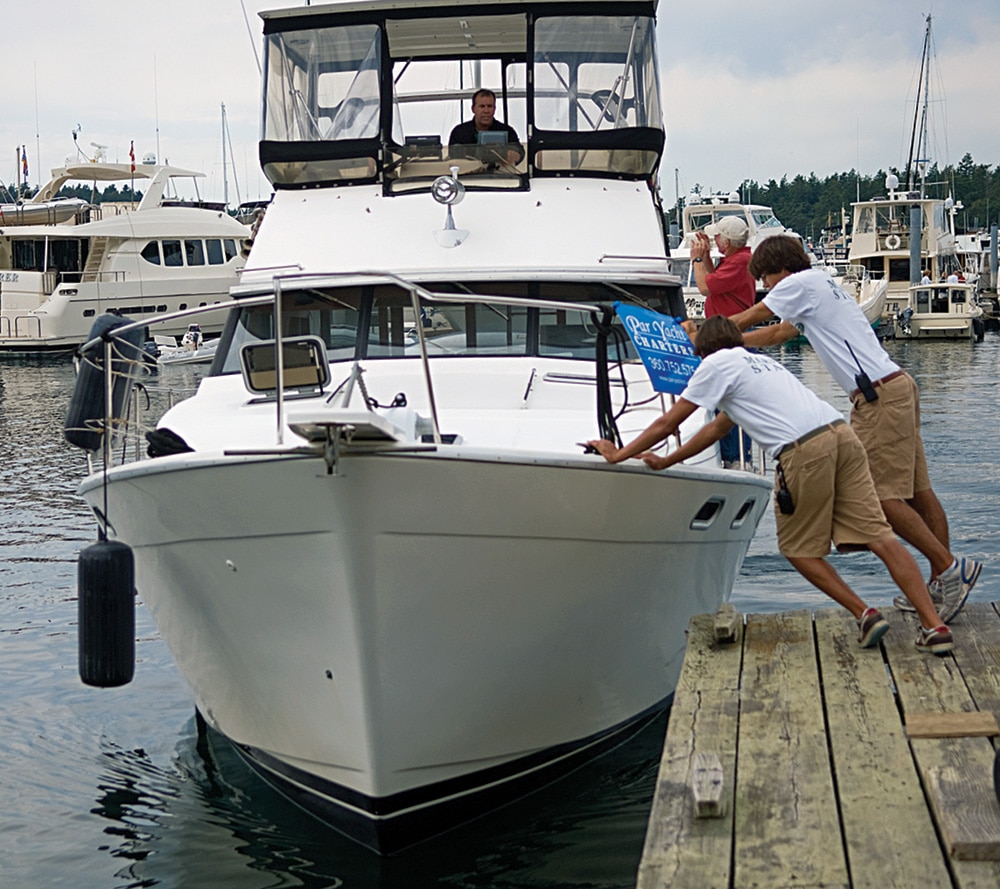
2. Learn How to Use Wind and Current to Your Advantage When docking in a tough spot, wind and current — coupled with knowledge of how they affect your boat — plus situational awareness can serve you better than an army of deck hands.
How to Use Wind and Current When Docking
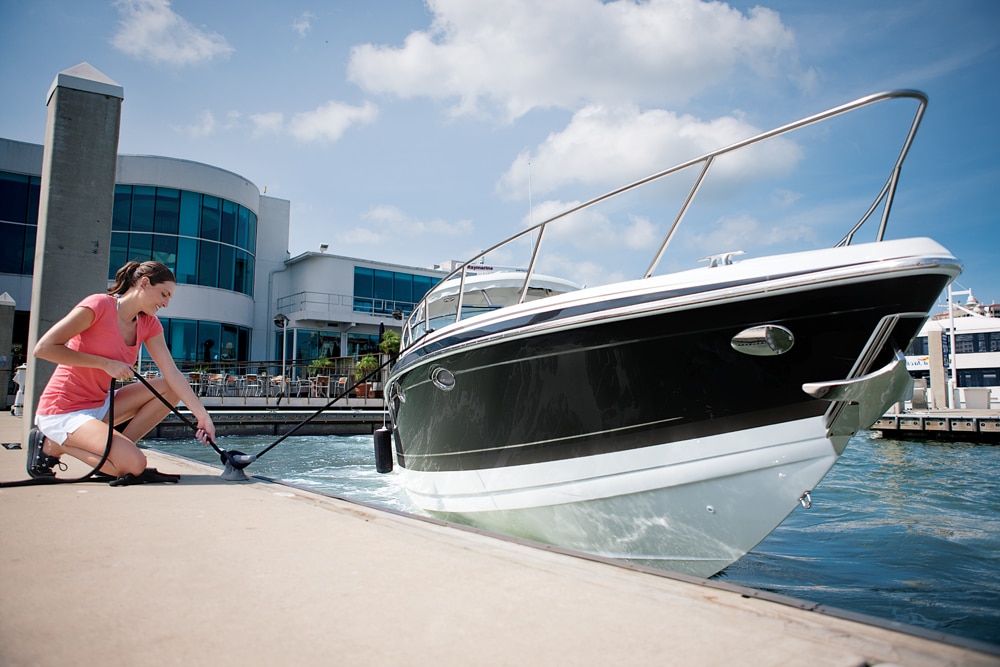
3. Dockmaster Docking Tip The first line to toss is your spring line, with loop fed through your boat’s cleat.
12 Tips From a Weekend Dockmaster
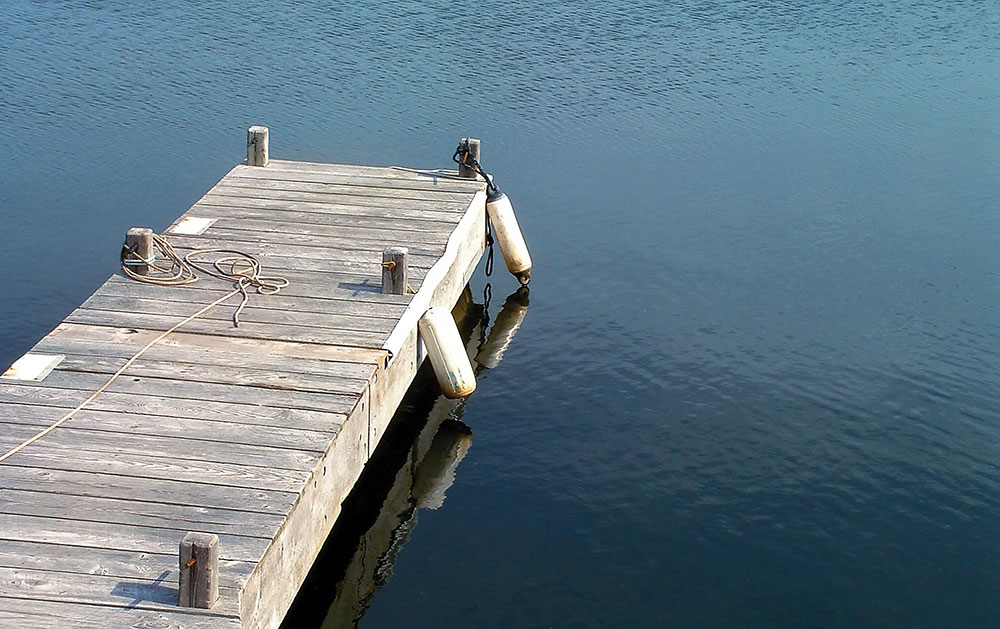
4. Warped Thinking Perfect the technique of “warping” to help you get out of tight docking situations.
Tips for Docking in the Wind
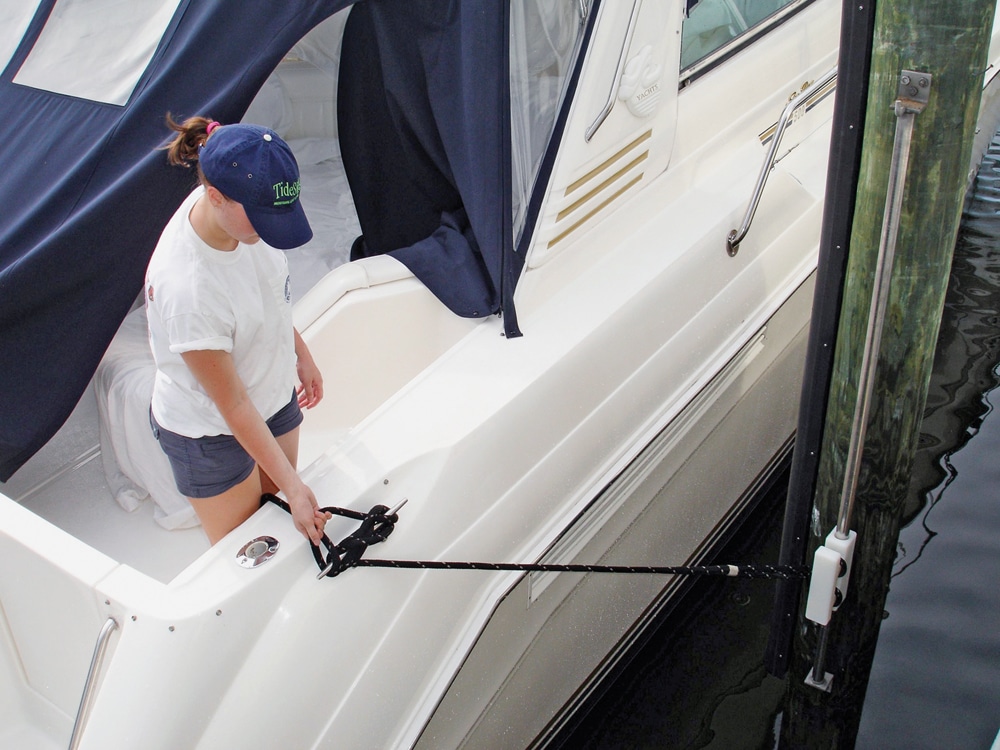
5. Leeward Lines First Remove the lines on the downward side first, since only the lines to weather are holding your boat in position.
Getting Out
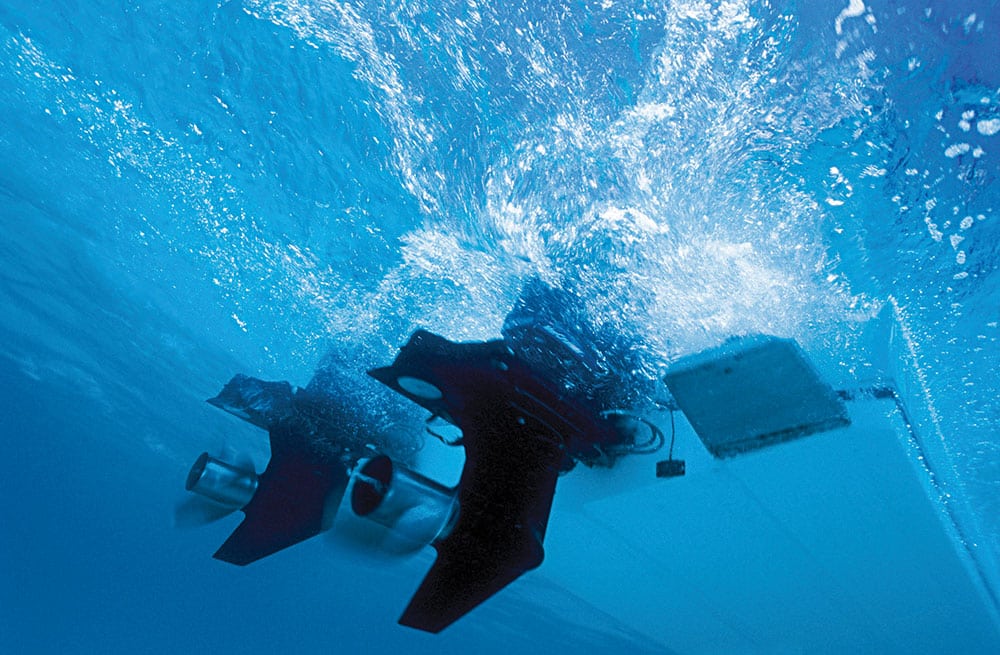
6. Using Reverse Learn how to make a reversing propeller your best friend and minimize stress and aggravation when docking.
Docking a Handicapped Twin-Screw
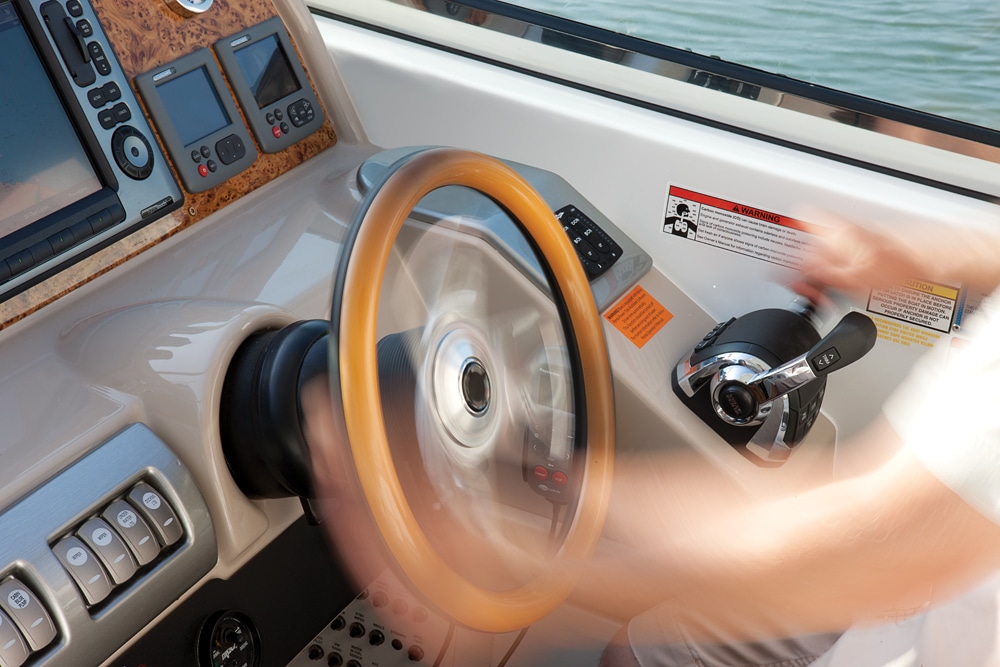
7. Watch Your Speed Minimal throttle, simply idling in gear, is the best speed for virtually every docking situation.
Dancing at the Dock
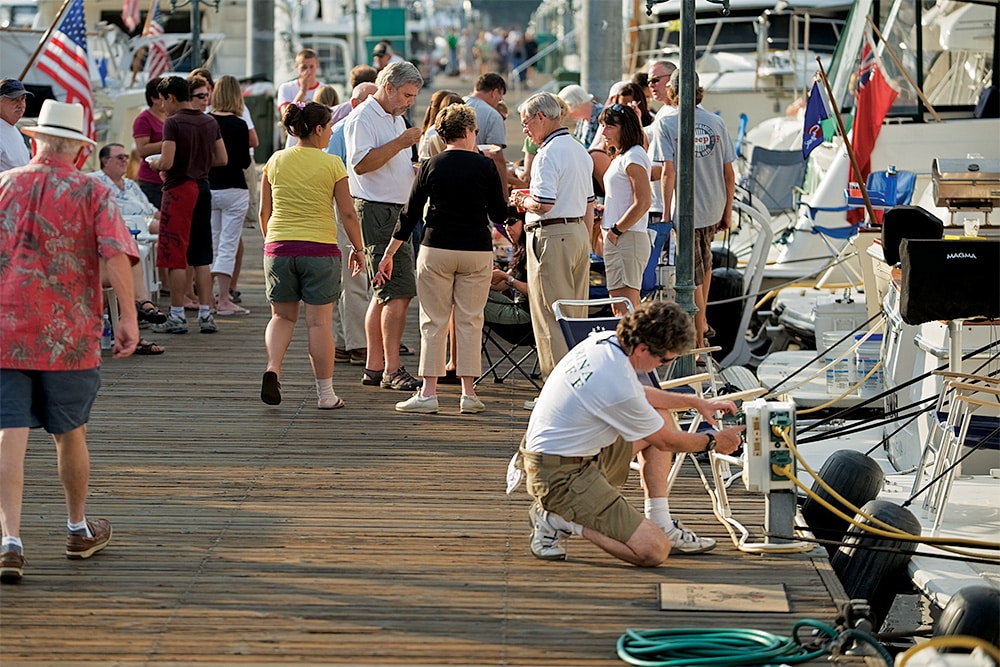
8. Stepping Up A dock hand will often step up onto a tied line, holding onto the boat for balance, and use the weight of her body to bring the boat in closer.
Doubling Up
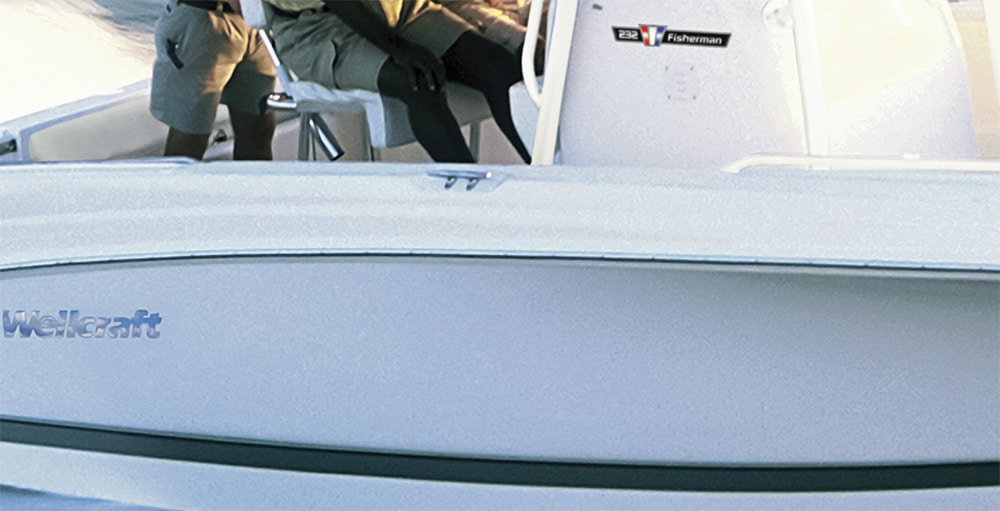
9. Controlled Docking The secret to “parallel parking” in a tight space is in knowing how to use the spring cleat properly.
Right Down the Middle
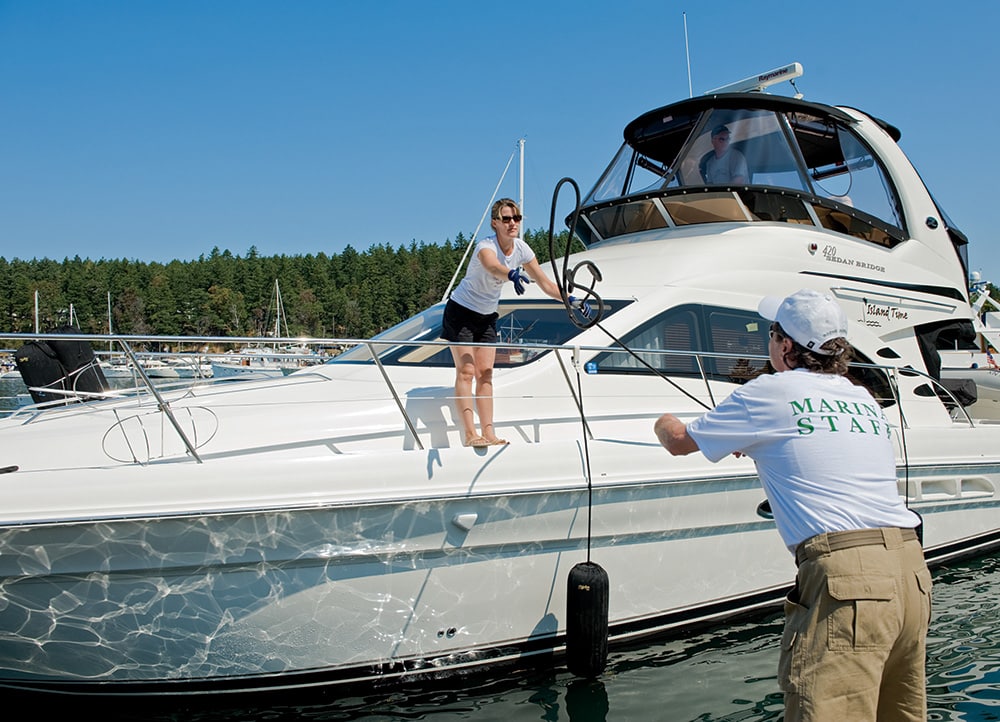
10. Toss a Line With a coil in each hand, step into a sidearm throwing motion, releasing when the coils are about shoulder high.
The Old Heave-Ho
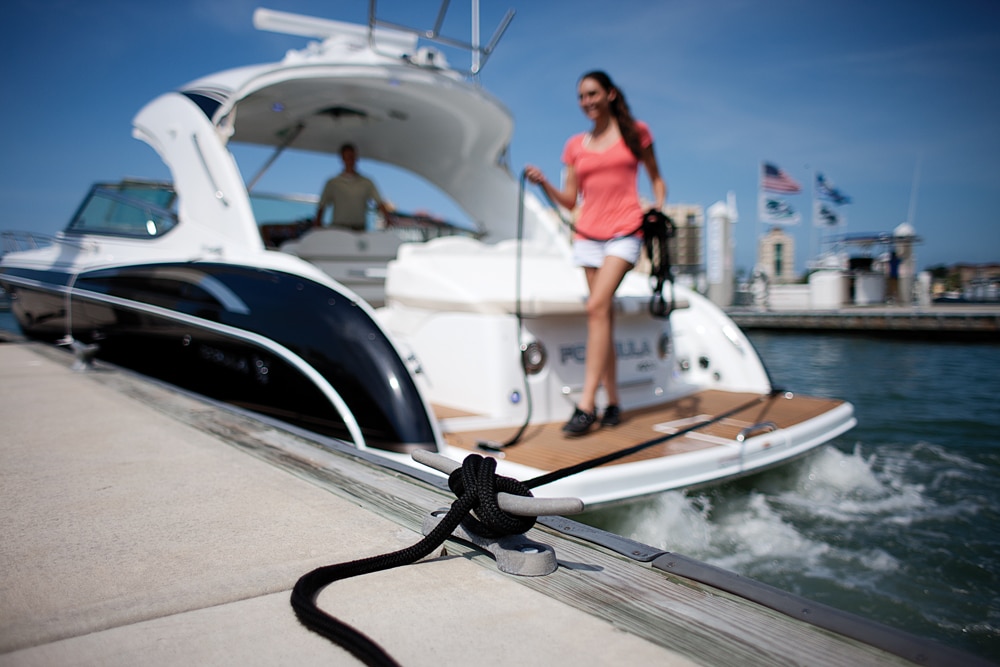
11. Hung Up Your boat can’t just be tied tight. You have to allow for the rise and fall of the water lest the boat be left hanging by its lines at low tide or pulled under by its lines at high tide.
Tips for Properly Rigging a Slip
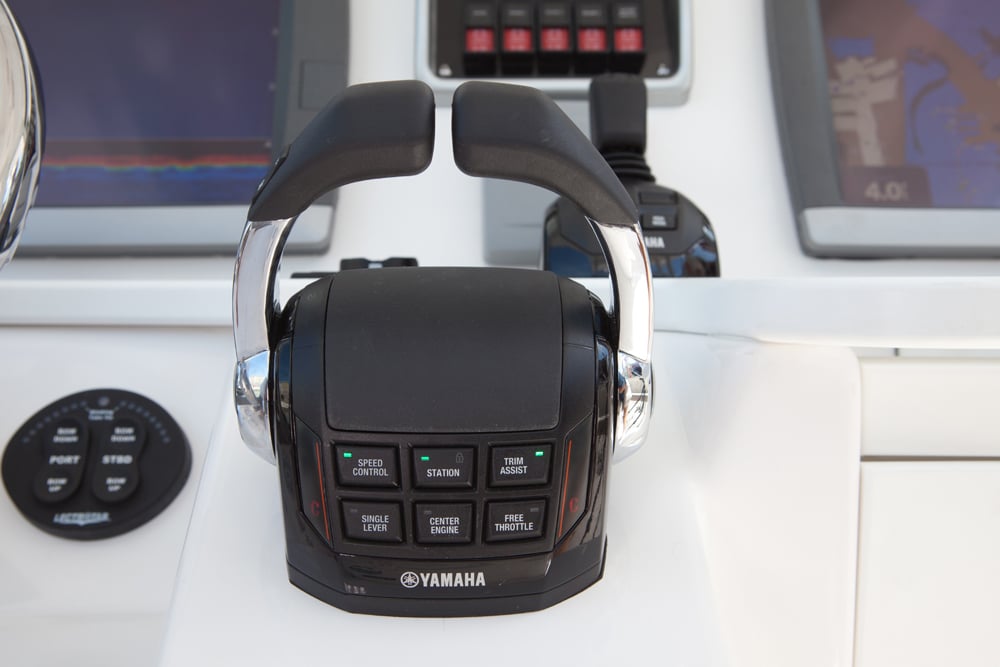
12. Make Small Steering and Throttle Corrections Use just enough throttle to move forward slowly, and if you need to shift to one side or the other, use small steering adjustments and wait for them to take effect before feeding in more.
Countercurrent
- More: docking , How-To , Photos
More How To

The Importance of Trailer Safety Checks

Compounding Mistakes Make for a Dangerous Situation

On Board With: Monique Richter
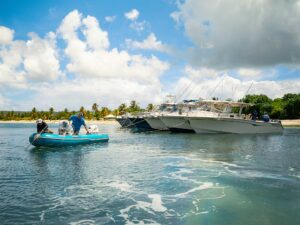
Grady-White Pulls off Its Largest Raft-up Ever in Vieques, Puerto Rico
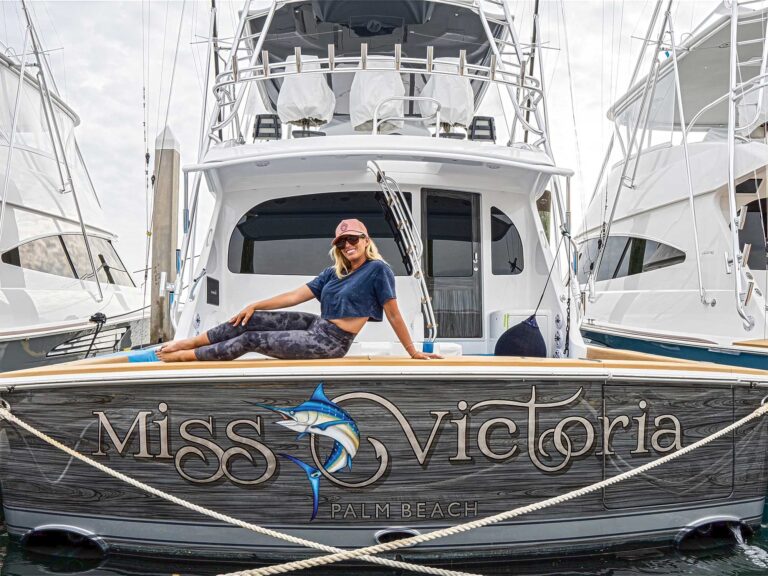
Boat Test: 2024 EdgeWater 208CC Watchman
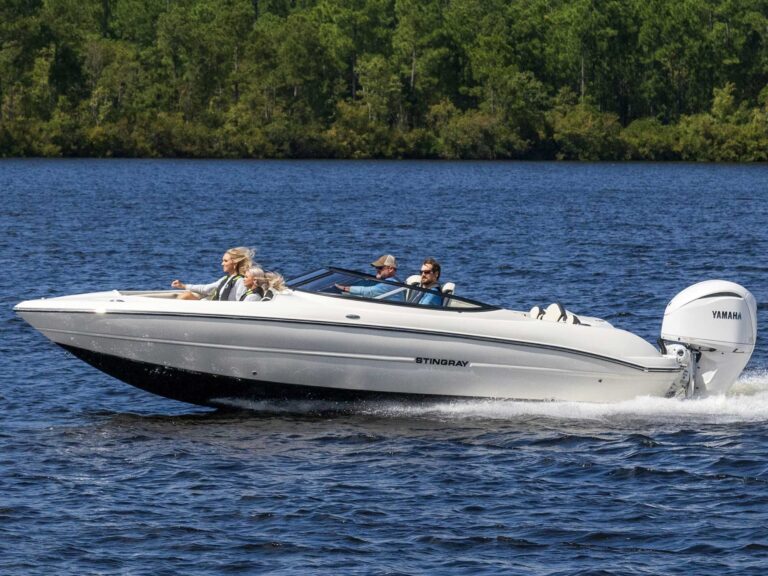
Boat Test: 2024 Stingray 23 OSX
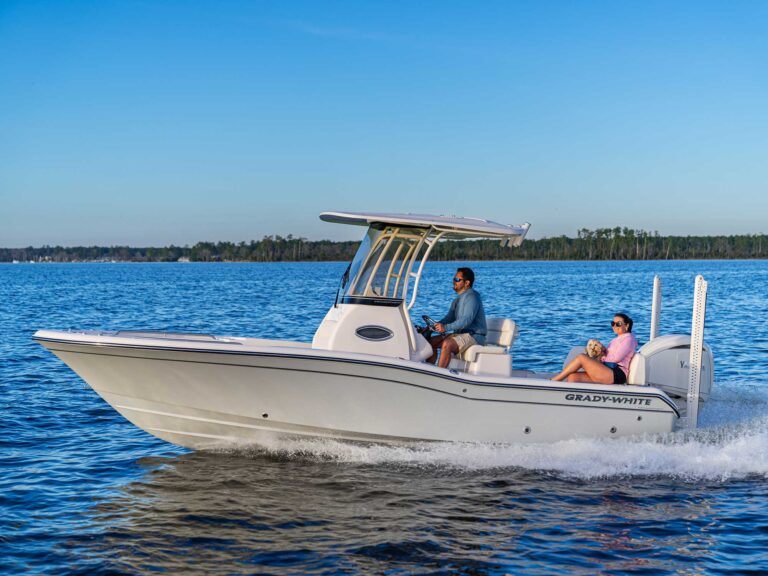
Boat Test: 2024 Grady-White 231 Coastal Explorer

- Digital Edition
- Customer Service
- Privacy Policy
- Terms of Use
- Cruising World
- Sailing World
- Salt Water Sportsman
- Sport Fishing
- Wakeboarding
Many products featured on this site were editorially chosen. Boating may receive financial compensation for products purchased through this site.
Copyright © 2024 Boating Firecrown . All rights reserved. Reproduction in whole or in part without permission is prohibited.
Docking Video’s
Be sure to checkout our full Docking playlist on YouTube

Phone: 772.205.1859 | [email protected] | Copyright © 2006 - 2023 Captain Chris Yacht Services LLC. All rights reserved.
- Search Please fill out this field.
- Manage Your Subscription
- Give a Gift Subscription
- Newsletters
- Sweepstakes
:max_bytes(150000):strip_icc():format(webp)/erica-gold-americas-got-talent-091624-1c04fcaab710471a96ed7a2f79b091ac.jpg)
- Celebrity Family
- Celebrity Parenting
TikTokers Matt and Abby Break Silence After Leaving Kids in Room to Go to Dinner on Cruise: 'Completely Untrue'
"We had someone with our children at all times on this boat. Period," Matt says in a new video of the cruise ship controversy
:max_bytes(150000):strip_icc():format(webp)/IMG_4737-8b5b28d8b0e4469cbec8fe71e041ff12.jpeg)
Abby Howard/Instagram
Influencers Matt and Abby Howard are responding to online criticism after sharing that they recently left their two sons in a cruise ship stateroom while they dined on board the vessel's restaurant.
In a new post, Matt clarifies that the children were not alone while the couple were dining, and that the couple had "someone with our children at all times."
The controversy stems from a since-expired Instagram Story in which Abby shared how she and Matt went to dinner on the cruise without their sons Griffin, 2, and August, 1, and used FaceTime to monitor them in the room.
"So we ended up taking them for 5 nights and it became apparent that they weren't enjoying it and therefore we weren't either," the viral mom wrote on Instagram. "So THEN we switched our dinner time to AFTER their bedtime and FaceTimed the monitors while we ate."
Elsewhere in the story, Abby noted that baby monitors "don't work on board" the cruise ship "unless you're only like 10 feet away." Referring to their dinnertime solution, she added, "And that worked out muchhhh better for everyone."
In a video posted to TikTok on Monday, Sep. 16, The Unplanned Podcast co-hosts responded to questions raised by the post, clarifying that the children were not unattended at any time aboard the cruise.
Saying that some of the information circulating online is "completely untrue," Matt adds: "We take our role as parents extremely seriously, and we love our children more than anything in the entire world, and we're very protective of our kids."
Matt goes on to say that the couple had just gotten back from a seven-night cruise with Abby's extended family, and acknowledges that Abby had posted that the couple were "at dinner, FaceTiming the baby monitors while our children were asleep in their staterooms."
"And people started to speculate, and believe, that we had left our children alone in their staterooms," Matt continues. "And that is just completely untrue. We had someone with our children at all times on this boat. Period."
Abby adds in the video: "I can see where my story did lead to misunderstanding, which is why I ended up deleting it several hours after posting it."
Abby adds that while she's thankful to those who expressed concern for the children, the couple wants "to clarify that we have not, would not, will not ever leave our children unattended."
Elsewhere in the video, Abby says that their children sleep in blackout tents — both during travel and at home — and that the tents are equipped with a slot for a baby monitor.
"Even if we are sleeping in the exact same room as the boys, we always turn their monitor on," she says, adding, "Even when we would tag-team and take turns at family dinner, we would turn on FaceTime so we could also have eyes on them as their parents, if we weren't the ones attending them in that moment."
"And we're so thankful to [Abby's family members]," Matt adds in closing the video. "Because we spent a lot of our time on this boat in our staterooms manning the baby monitors. and if it wasn't for Abby's extended family, we really would have not gotten a chance to really get out of the room."
Related Articles
Morning Rundown: Diddy indictment to be unsealed, Secret Service head says calls for 'paradigm shift,' and Amazon workers to return to office full-time
Sean 'Diddy' Combs arrested by federal agents in New York
Sean “Diddy” Combs was arrested Monday, the U.S. Attorney’s Office in New York City said.
Combs was arrested at the Park Hyatt hotel on West 57th Street, a representative said. He was caught off-guard by the apprehension, according to a person familiar with the situation, who added he had been living at the hotel for several weeks.
U.S. Attorney Damian Williams confirmed in a statement that on Monday evening, federal agents arrested Combs based on a sealed indictment filed by the Southern District of New York.
“We expect to move to unseal the indictment in the morning and will have more to say at that time,” Williams said.

Combs’ attorney Marc Agnifilo expressed disappointment in a statement. He said Combs, 54, had been cooperative with the investigation and “voluntarily relocated to New York last week in anticipation of these charges.”
“Sean ‘Diddy’ Combs is a music icon, self-made entrepreneur, loving family man, and proven philanthropist who has spent the last 30 years building an empire, adoring his children, and working to uplift the Black community,” the statement said. “He is an imperfect person but he is not a criminal.”
“These are the acts of an innocent man with nothing to hide, and he looks forward to clearing his name in court,” it added.
It was not immediately clear on what charges Combs, the rapper-turned-music mogul, was arrested.
Combs has faced a wave of lawsuits — one as recent as last week — accusing him of sexual assault and misconduct since November, when former girlfriend Casandra Ventura sued him in federal court, accusing him of years of physical and sexual abuse.
Ventura, who is best known by her stage name, Cassie, was once signed to Combs’ Bad Boy record label. The two settled her lawsuit a day after it was filed, without disclosing the terms of the settlement. An attorney for Combs said the settlement was not an acknowledgment of wrongdoing. He previously denied the allegations.

Since then, a number of others have sued, in cluding Dawn Richard , who alleged that he groped and threatened her when he employed her from 2005 to 2012 and that she witnessed him brutally beat Ventura. Combs has vehemently denied the accusations in the lawsuits, saying they were “sickening allegations” from people looking for “a quick payday.”
But in May, after CNN released hotel video of Combs kicking, punching and throwing Ventura on the floor in a hallway in Los Angeles in 2016, he apologized in a video on Instagram in which he said that his behavior was “inexcusable” and that he had sought therapy. The video was later removed from his page.
Richard, who was a member of the girl group Danity Kane, which Combs formed on the MTV reality competition “Making the Band,” and later the group Diddy — Dirty Money, sued Combs last week.
An attorney said Combs was “shocked and disappointed” by Richard’s lawsuit, which, like Ventura’s complaint, depicts him as controlling and violent.
Ventura’s lawsuit included allegations of sex trafficking. She alleged that he frequently beat her, that he forced her to engage in sex acts with male prostitutes — drug-fueled encounters Combs referred to as “freak offs” and sometimes recorded — and that in 2018, as she was trying to end their relationship, he forced his way into her home and raped her.
Richard said in her suit that she attended “drug-fueled parties,” where guests were required to surrender their phones. She also said she witnessed what she believed were inebriated underage girls being sexually violated by Combs and his guests.

In March, federal investigators searched Combs’ homes in Miami and Los Angeles.
Investigators interviewed several people in relation to allegations of sex trafficking, sexual assault and the solicitation and distribution of illegal narcotics and firearms, a source familiar with the investigation told NBC News in March.
The warrant to search Combs’ properties came from the Southern District of New York, NBC News has reported.
Combs, who has also gone by such names as Puffy, Puff Daddy and Love, founded Bad Boy in the early 1990s. He is regarded as a trailblazer of hip-hop, fashion and media, having created the Sean John clothing line and launched the Revolt TV channel, which he sold his stake in over the summer .
Rodney “Lil Rod” Jones, a producer on Combs’ most recent album, alleged in a lawsuit in February that Combs made unwanted sexual contact, forced him to hire prostitutes and pressured him to participate in sex acts with them. Jones said he lived and traveled with Combs from September 2022 to November 2023, during which time he recorded hours of video and audio of Combs, his staff and others “engaging in serious illegal activity.”
His attorneys, Rodney S. Diggs and Tyrone Blackburn, who are also representing other Combs accusers, said Combs’ “long awaited arrest” was “an important step towards justice for all of Mr. Combs’ victims.”
“We leave the criminal aspect of this case in the hands of the people and justice system,” they said Monday night. “As for the civil cases, we await our time for the facts to reveal themselves and seek the justice our clients deserve. We also anticipate more victims coming forward. We knew this was coming. The evidence is very clear and it was only a matter of time.”
After the hotel video of Combs assaulting Ventura was published, Howard University cut ties with him . In June, the school rescinded an honorary degree it awarded him and disbanded a scholarship program in his name. The same month, Combs honored a request from New York Mayor Eric Adams and returned h is key to the city .
This month, Combs listed his home in Los Angeles that was raided in March for $61.5 million.
Chloe Melas is an entertainment correspondent for NBC News.
Julia Ainsley is the homeland security correspondent for NBC News and covers the Department of Homeland Security for the NBC News Investigative Unit.
Janelle Griffith is a national reporter for NBC News focusing on issues of race and policing.
Doha Madani is a senior breaking news reporter for NBC News. Pronouns: she/her.

COMMENTS
Learn how to safely and correctly dock a sailboat with expert boating tips in this free video clip on sailing.Expert: Kelli Gant, Steve Damm, Ed PolkenhornBi...
Learn how to dock a sailboat under sail, or under power, in a variety of different scenarios. Sailing legend Peter Isler walks us through the process using animations, illustrations and live action footage. Understand the techniques and skills required by both skipper and crew in order to make your docking experiences safe and easy.
Docking can be incredibly challenging and result in lots of damage to your boat, to other boats and to docks. Watch the video to see some simple tips to do t...
This is our introductory video to a series on docking a sailboat. This video introduces a set of processes which will allow you to dock your boat with grace...
The series is written and narrated by two-time America's Cup winner Peter Isler who maps out the safe and correct methods of handling a sailboat both under sail or under power. Course Outline. The course consists of seven videos and can be completed in about 30-40 minutes. Sailors who purchase the course have 30-days of unlimited on-demand ...
DOCKING UNDER POWER. In this sailboat docking video, Offshore Sailing School Founder, Steve Colgate, shows you the best way to dock under power. This simple system gives you excellent control whether you are sailing with others or single-handed. Here are some helpful hints on how to dock a sailboat: Set up your aft amidships spring line first
Approach the dock at a steeper angle, so the wind pushes your boat towards the dock rather than away from it. Use your engine or sails to maintain a controlled speed and counteract the wind's force. Be prepared to make quick adjustments to your boat's position and speed as needed. 3. Docking and Undocking in Currents.
Ask Captain Chris about docking procedures for cruising boats with single engine, twin engine or pod drives both with and without thrusters. Learn easy to understand docking maneuvers with split screen views including controls at the helm and dockside landing. You will discover simple techniques to take the stress out of docking, keeping the pleasure in pleasure boating.
Watch the video below to see tips and tricks. But first, a simple few tips to get you going: 1. Practice docking at an empty pier. Practice makes perfect! 2. The wind wins. If it's blowing from the dock, approach at a steep angle, using reverse gear and prop torque to swing the stern toward the dock. If it's blowing toward the dock, plan to ...
A big SeaRay docking in high winds at Tidewater Marina in VA. Watch the procedure and consider his decision to bow into the slip. Its was a good move understanding the conditions. #4 Docking Video - Single Engine Docking. Watch this new boat owner dock his single engine Mainship into the slip near White Rocks in the Chesapeake Bay.
Make adjustments (reverse if you're going too fast, forward if you've lost way) and slow down until you are stopped or nearly stopped a few feet away from the dock. Ask the crew to toss the aft spring loop onto a cleat. Then pop into forward with very low throttle and turn the wheel away from the dock.
Follow our beginner's guide on how to dock a boat, 6 Steps to Docking a Boat Like a Pro, powered by Progressive®, to discover a few simple ways to feel more confident at the helm.Whether you are docking in a slip, coming alongside a dock, or docking against the wind or current, these pro tips will help you line up your approach and ensure you're ready for any docking scenario.
You'll receive 12 video-based lessons, including: Lesson 1: Understanding the Factors at Work - the 6 forces and factors that impact your efforts to dock successfully. Lesson 2: Using the Factors for Success - the skills you should have in order to improve your ability to dock proficiently. Lesson 3: Steering Effectively in Reverse - the ...
Follow our beginner's guide on how to dock a boat, 6 Steps to Docking a Boat Like a Pro, powered by Progressive®, to discover a few simple ways to feel more ...
LOS ANGELES - January 4, 2017 - The American Sailing Association (ASA), America's sail education authority, announced today that it has published the fourth and final video in its educational series, Docking Made Easy. As the title suggests, " Returning to the Dock Under Power " addresses all of the necessary and important factors to ...
3. Docking with wind or current. 4. Approach the dock slowly. 5. Swing the wheel. Last Updated on August 15, 2023 by Boatsetter Team. Learning how to dock a boat with style and confidence requires a little experience and familiarity with how your boat handles. Docking a boat by yourself or with a crew aboard becomes easier once you learn how to ...
How to Dock a Boat. Prepare dock lines on your bow and stern and attach fenders. Line up your approach and survey the docking area. Judge the current, wind, and water conditions. Take your time, proceed slowly towards the dock using intermittent acceleration. Never approach a dock any faster than you're willing to hit it.
12 Top Docking Tips. 12 Top Docking Tips Boating Magazine. 12. Make Small Steering and Throttle Corrections. Use just enough throttle to move forward slowly, and if you need to shift to one side or the other, use small steering adjustments and wait for them to take effect before feeding in more. Countercurrent.
Docking Tips With Captain Chris. Parallel parking 65 Sportfisherman. 50 footer, 3 point U turn. DeFever 50 at Mears Marina, MD. White knuckle docking at 2 knots. Bend around the piling when docking here. Carver 440 docks in Norfolk. Swift Trawler docking in Bradenton, FL. Dock in slight winds.
Tangle a mooring line in your propeller, and that docking job will go south in a hurry. #4: With twin inboards, don't touch the wheel. Ever. You'll be tempted, but you have more control if you leave the wheel centered and use only the engines. If you do turn the wheel, then when you try to use the engines and the prop-wash hits a cockeyed ...
BoatUS Magazine's Mike Vatalaro teaches you to how to bring your outboard- or sterndrive-powered boat alongside a dock or bulkhead in four simple steps. Lear...
Opening day of dove season, applying for a boat ramp, getting in the stand for deer archery season.
Prosecutors in Italy are seeking a six-year jail term for deputy prime minister Matteo Salvini over a decision in August 2019 to stop a migrant boat from docking. The ship, operated by the Open ...
Learn More About Your Boats Systems By Joining The Born Again Boating Academy! https://www.bornagainboating.com/Get Your Born Again Boating Clothing! https:/...
"We had someone with our children at all times on this boat. Period," Matt says in a new video of the cruise ship controversy Virginia Chamlee is a Politics Writer at PEOPLE. She has been working ...
Boating enthusiasts and lake lovers have reason to celebrate as the City of Winter Park announces the reopening of the boat ramp at Dinky Dock Park & Winter Park Chain of Lakes. After a period of ...
How do I safely dock my boat is a question we get daily. One of the most stressful parts of boat ownership is the process of docking at a marina or even your...
Sean "Diddy" Combs was arrested Monday, the U.S. Attorney's Office in New York City said. Combs was arrested at the Park Hyatt hotel on West 57th Street, a representative said. He was caught ...
Docking is easy, Ask Captain Chris to show you how - https://www.captainchrisshipstore.com/
Thanks to Cyberghost for making this video possible! Click on https://www.cyberghostvpn.com/SailingJibsea and get 84% discount + 4 months free including 45 d...